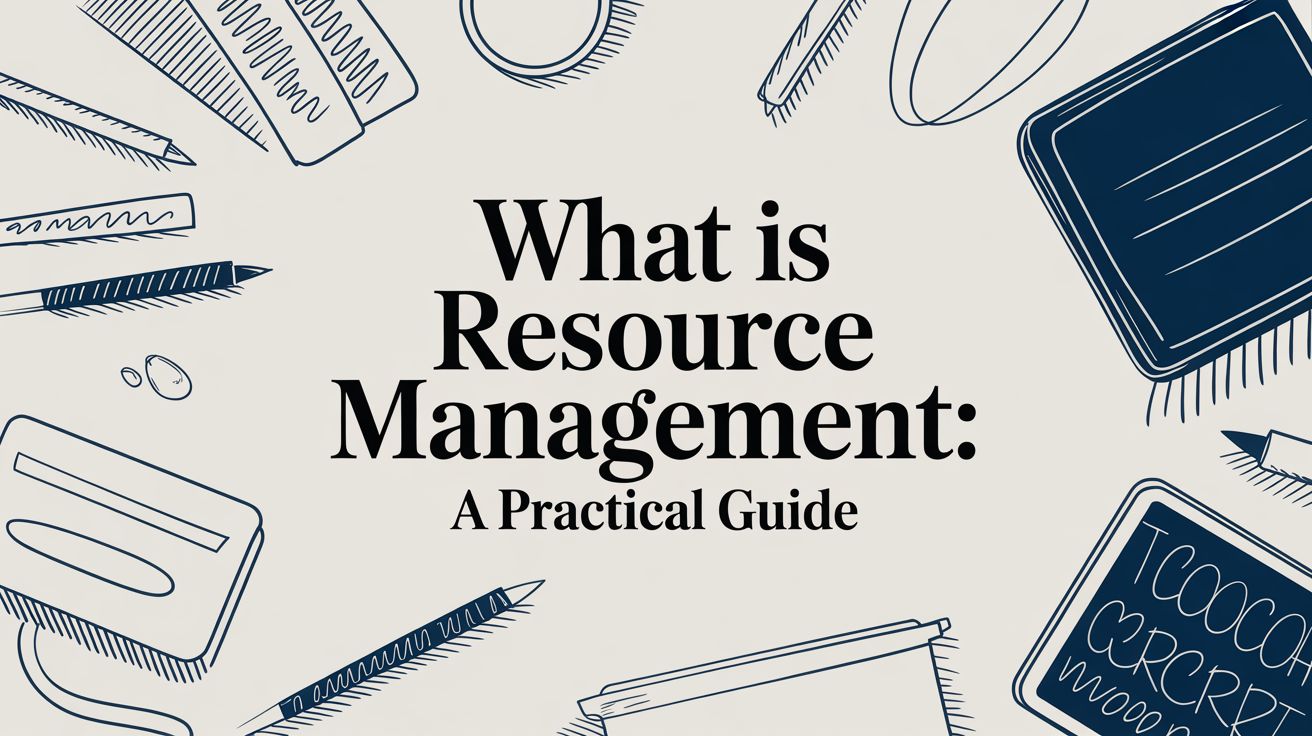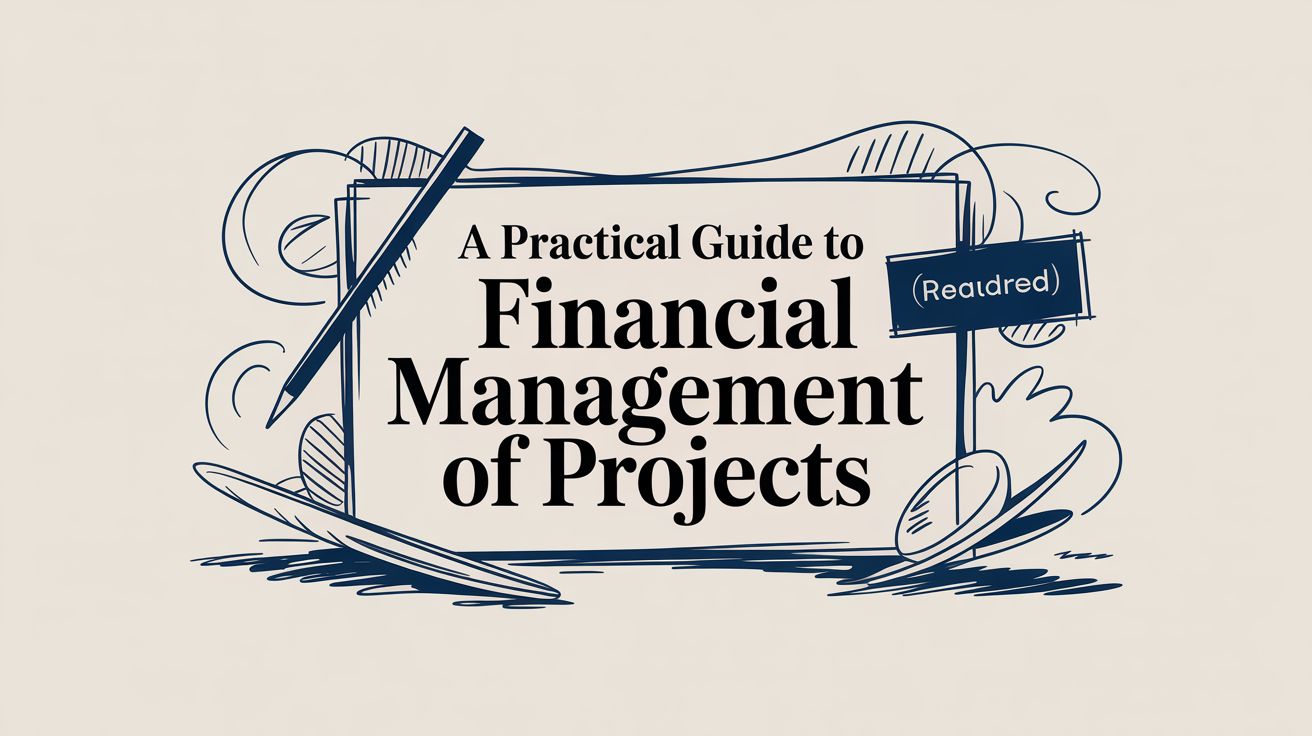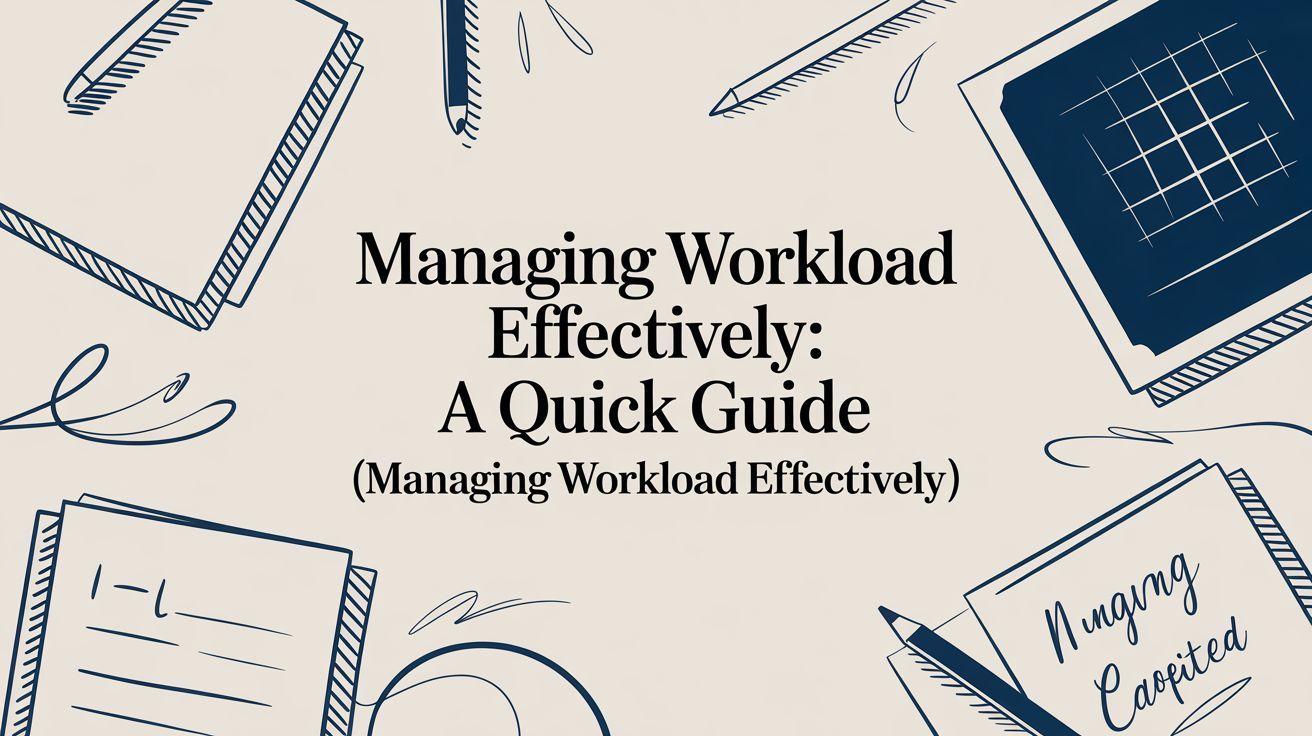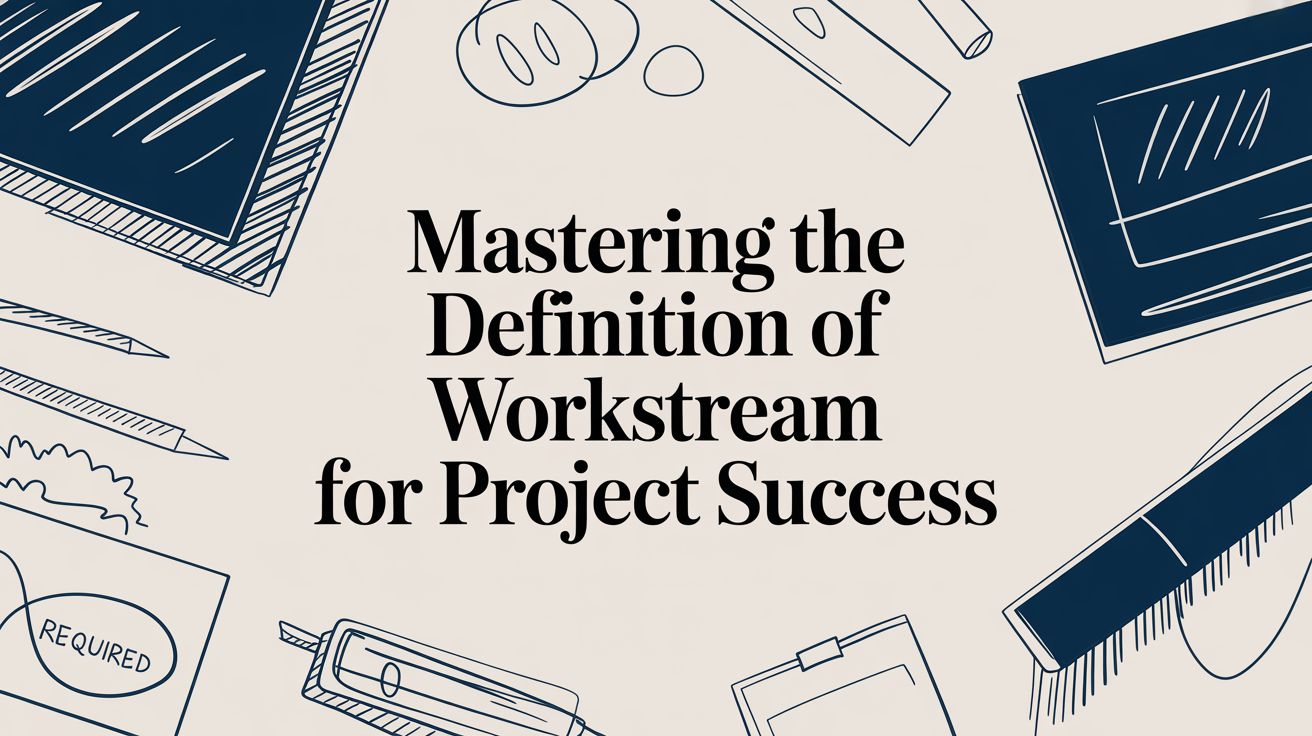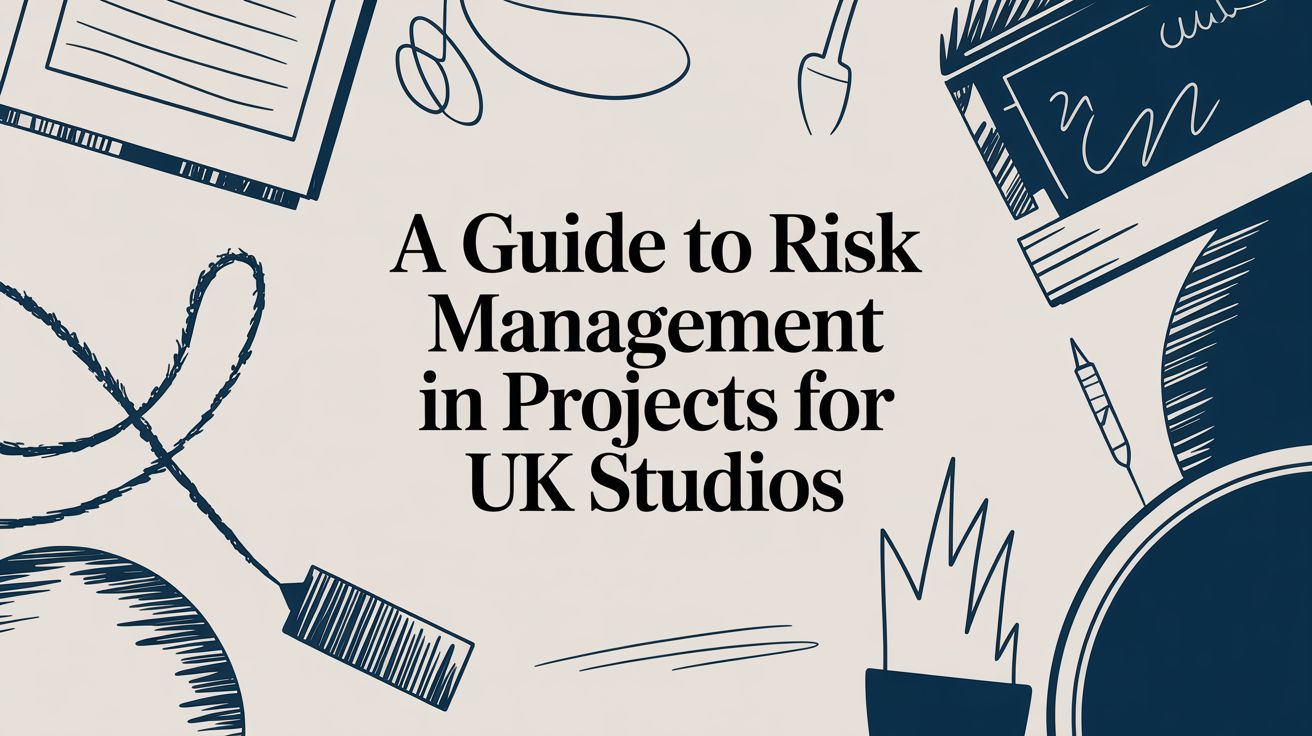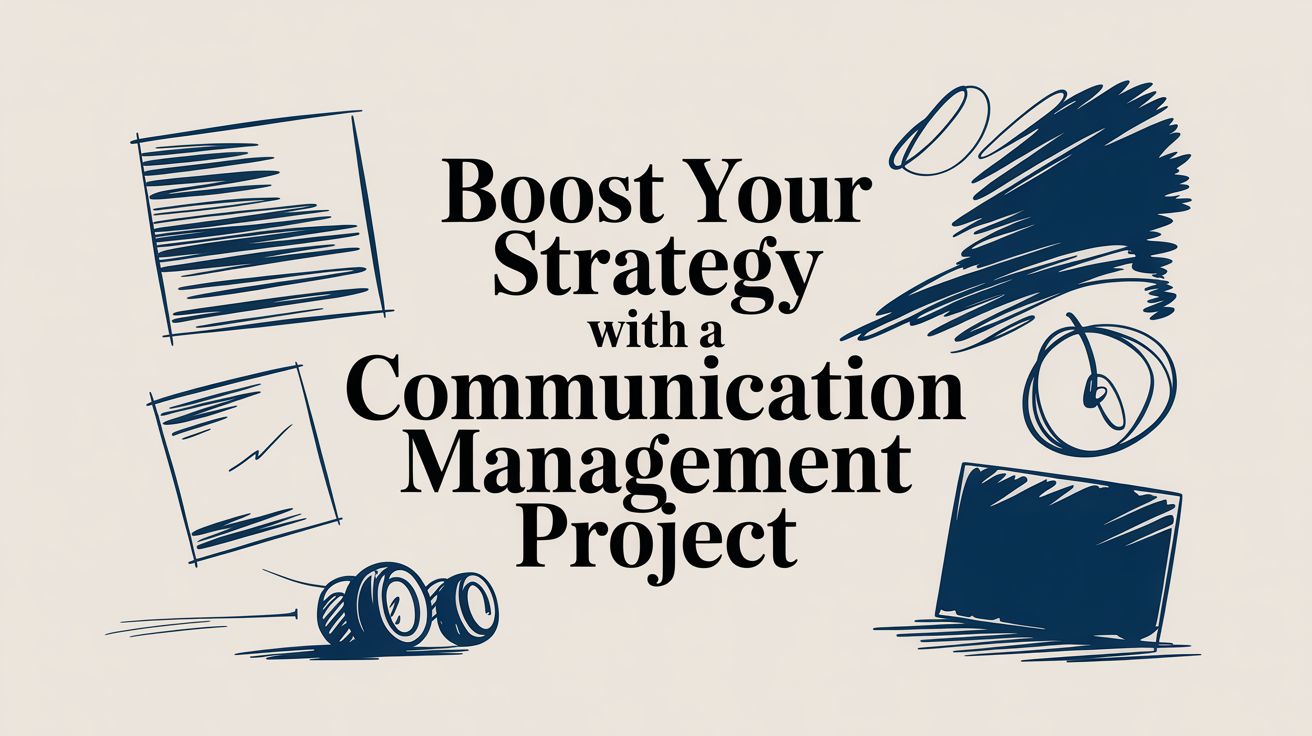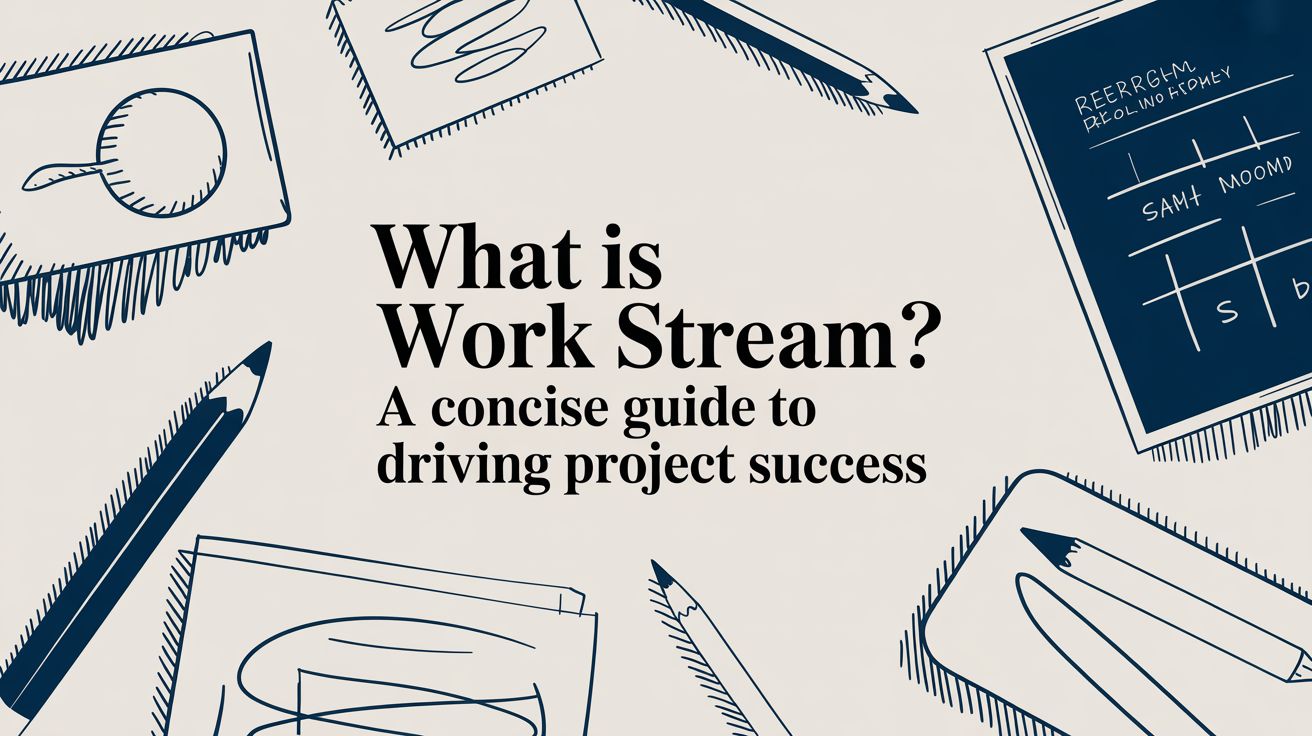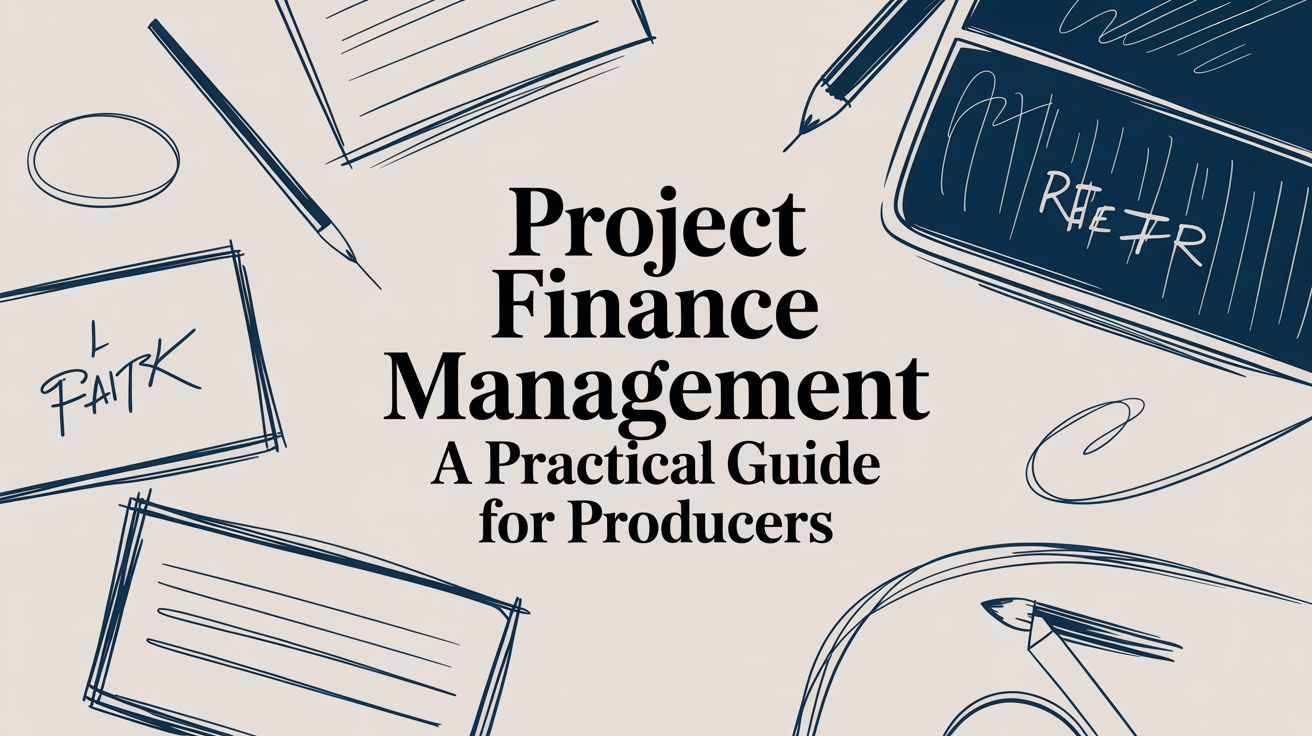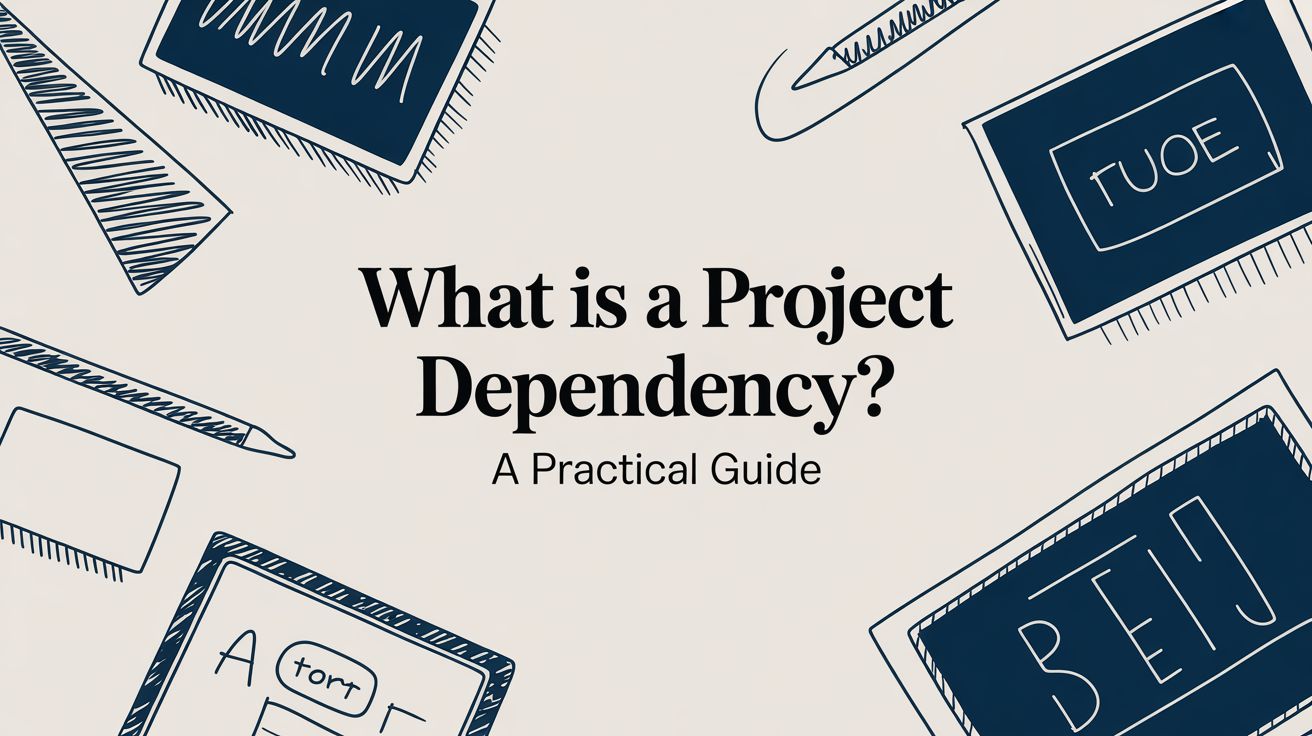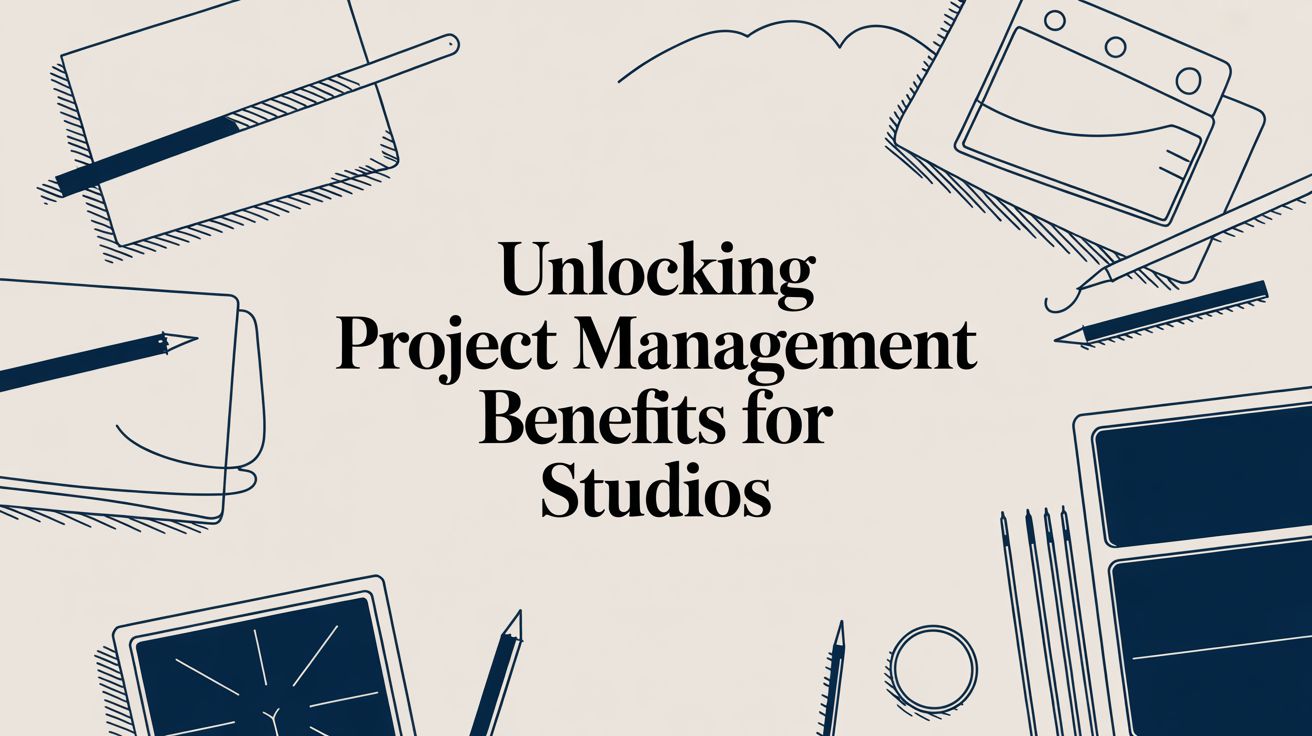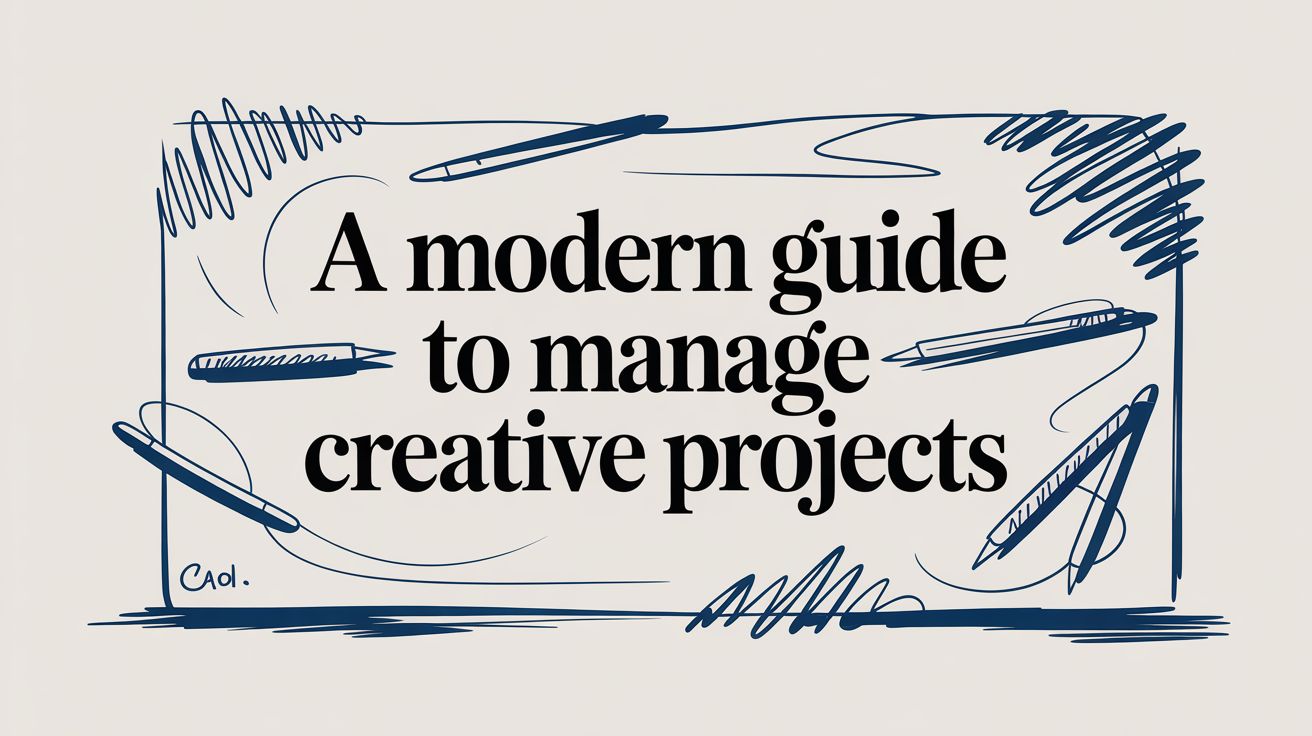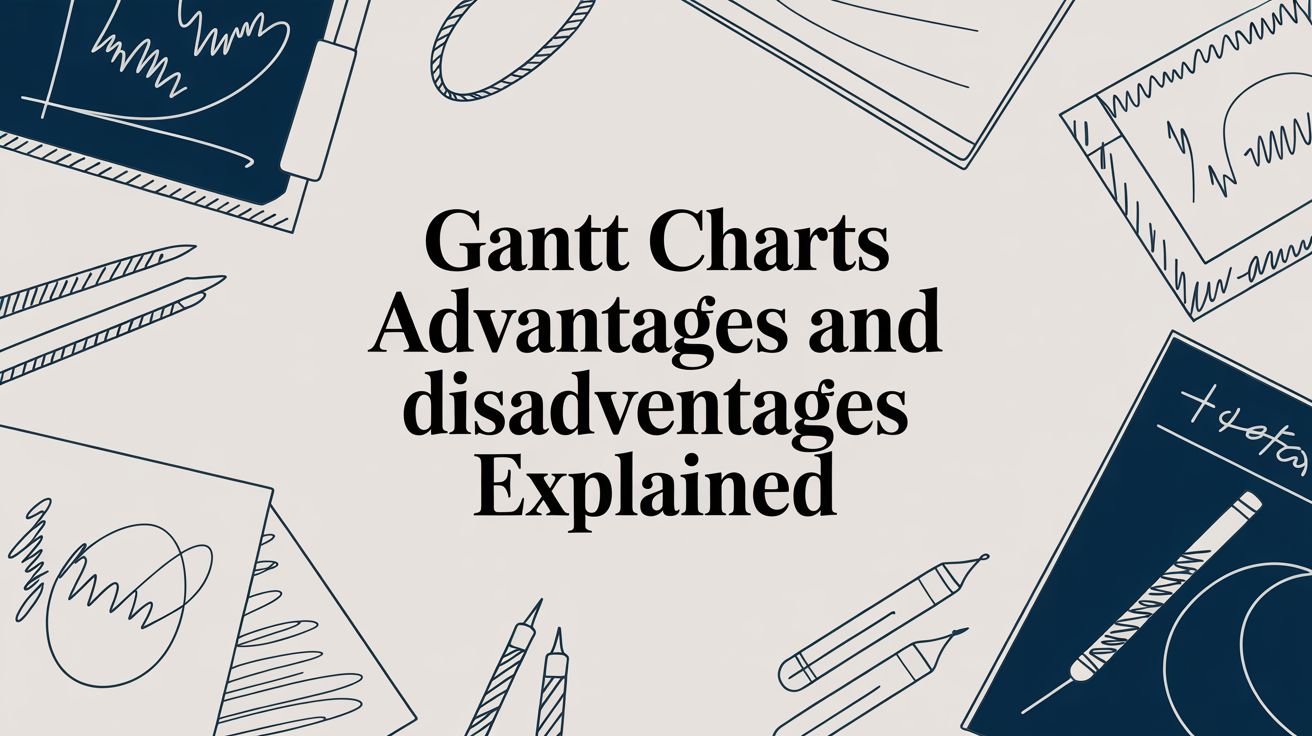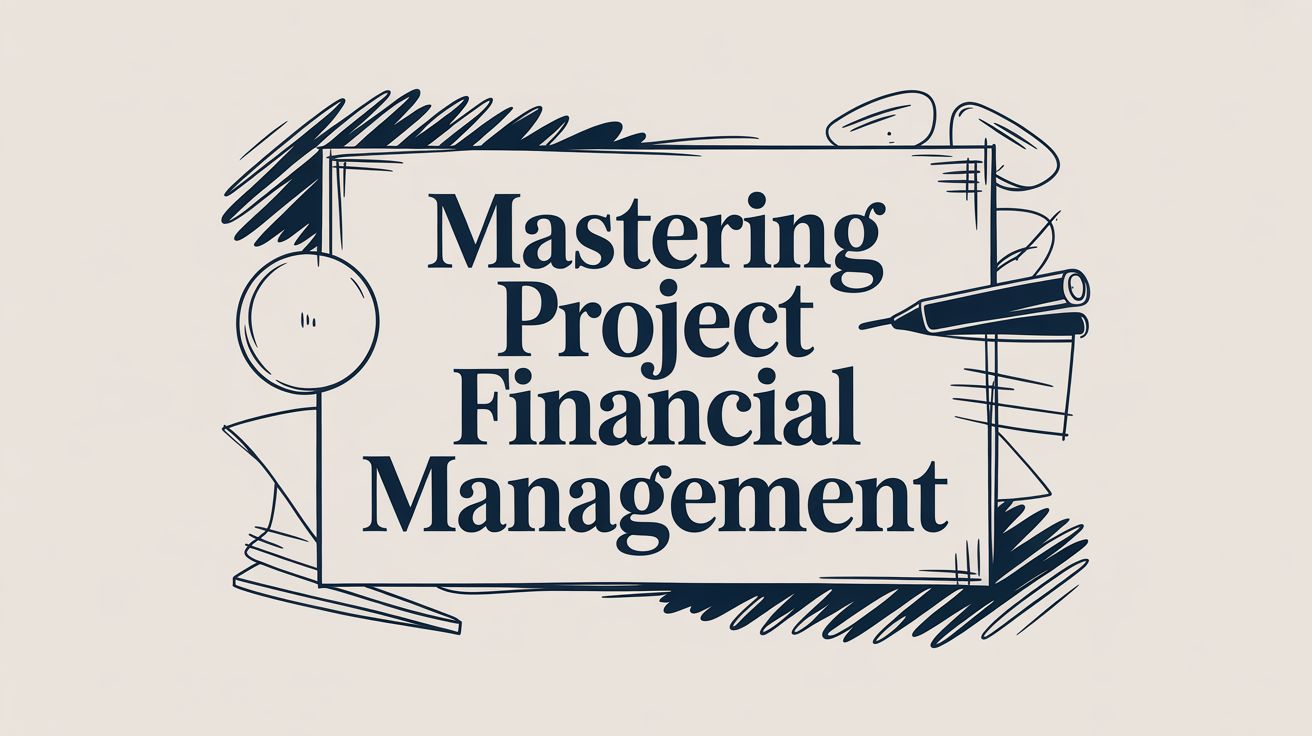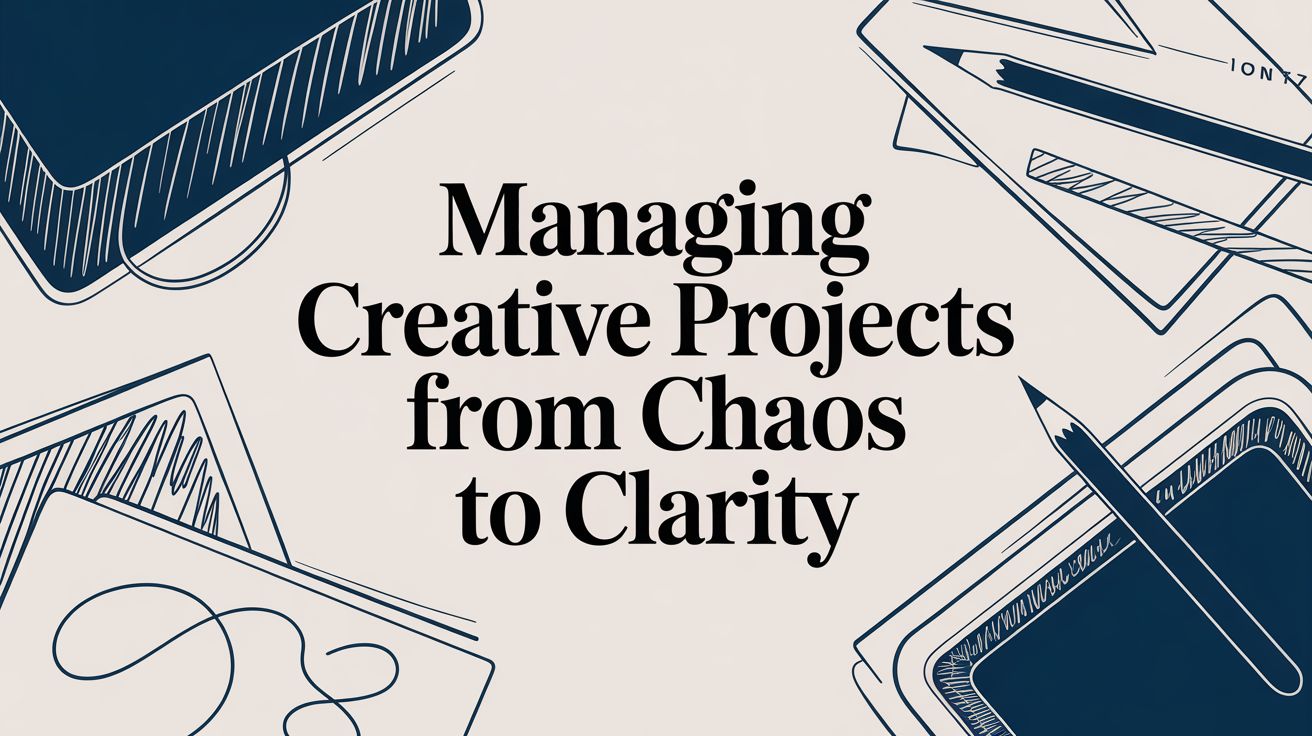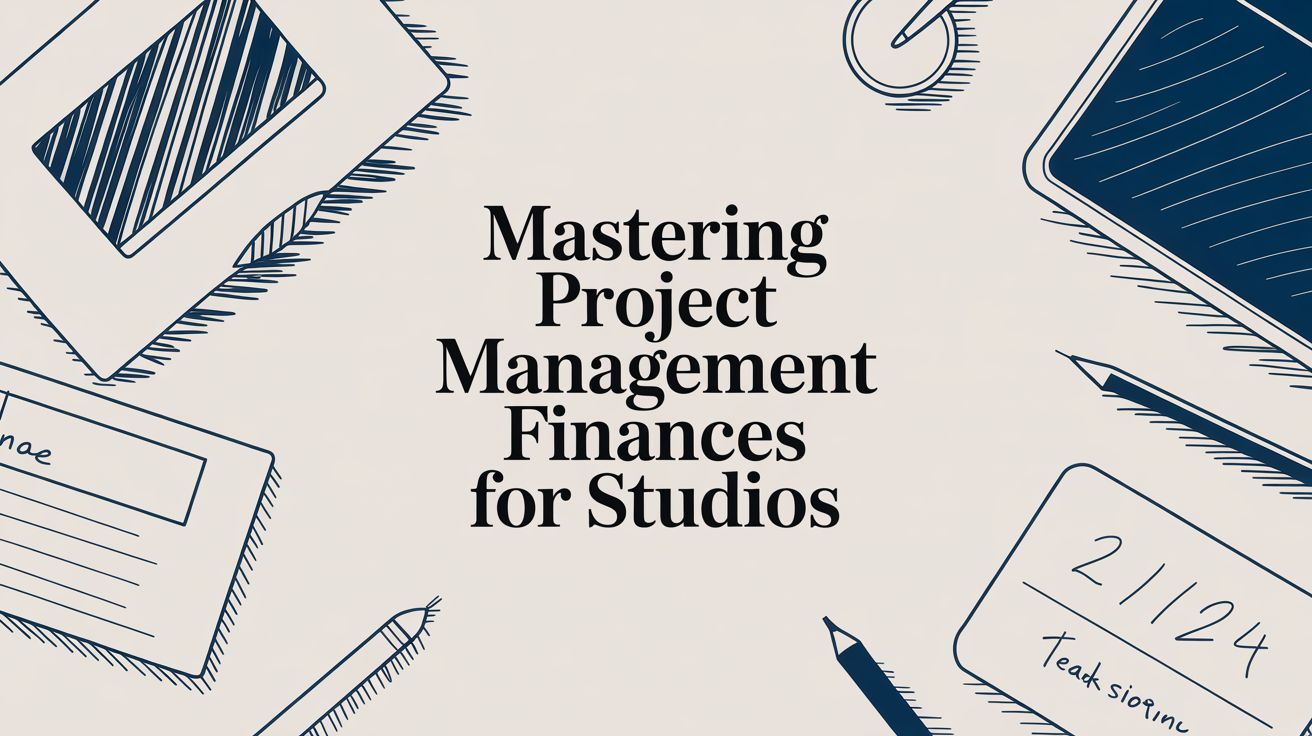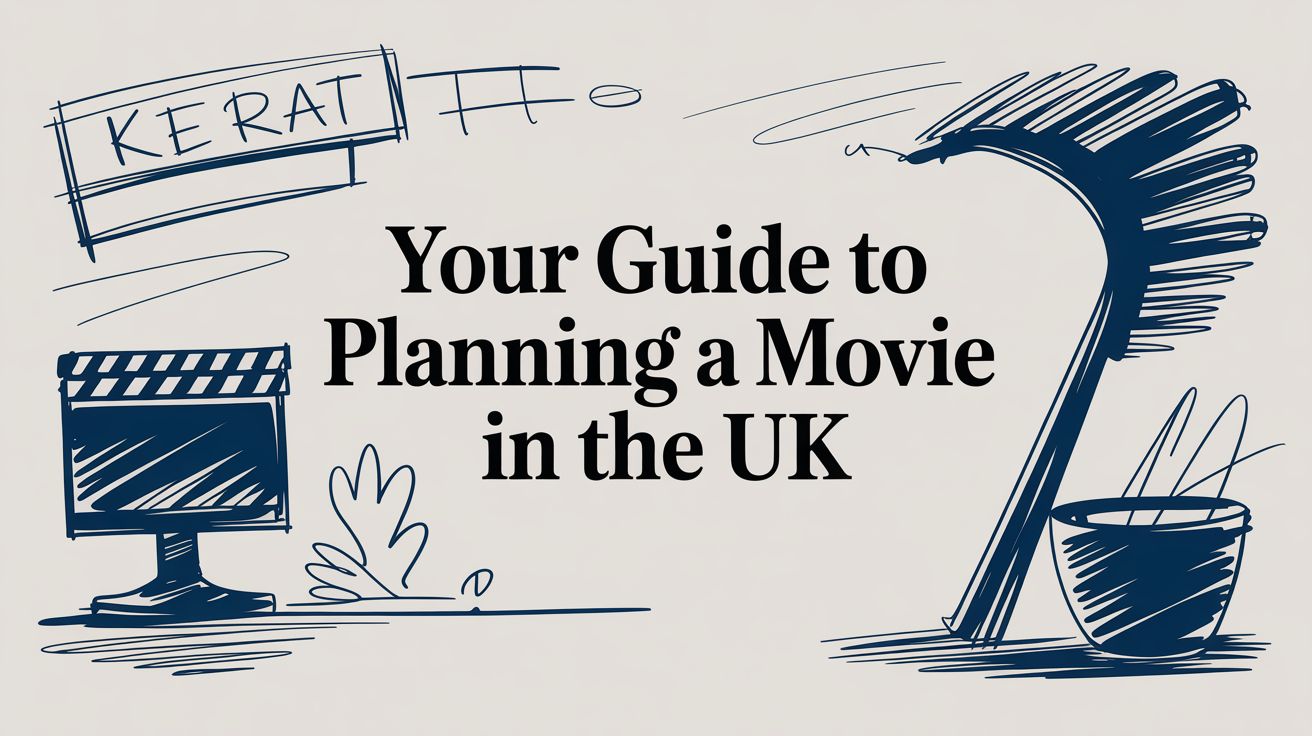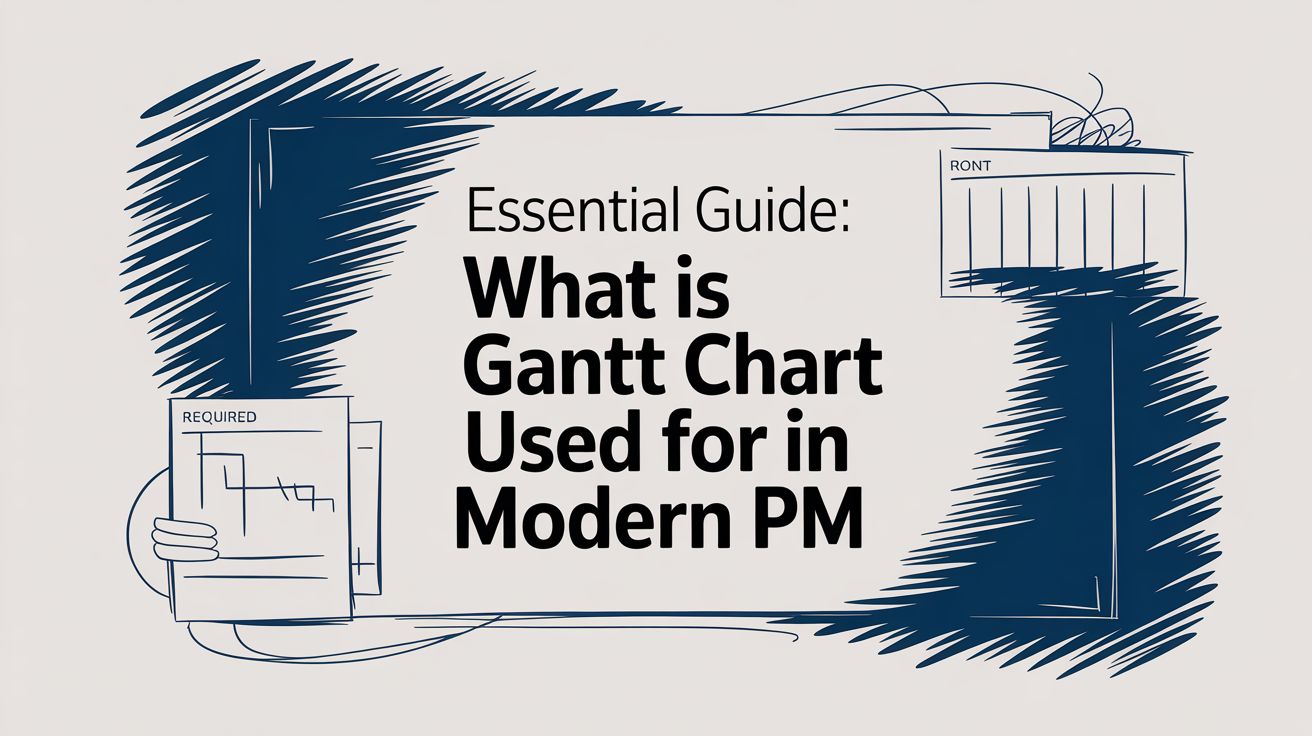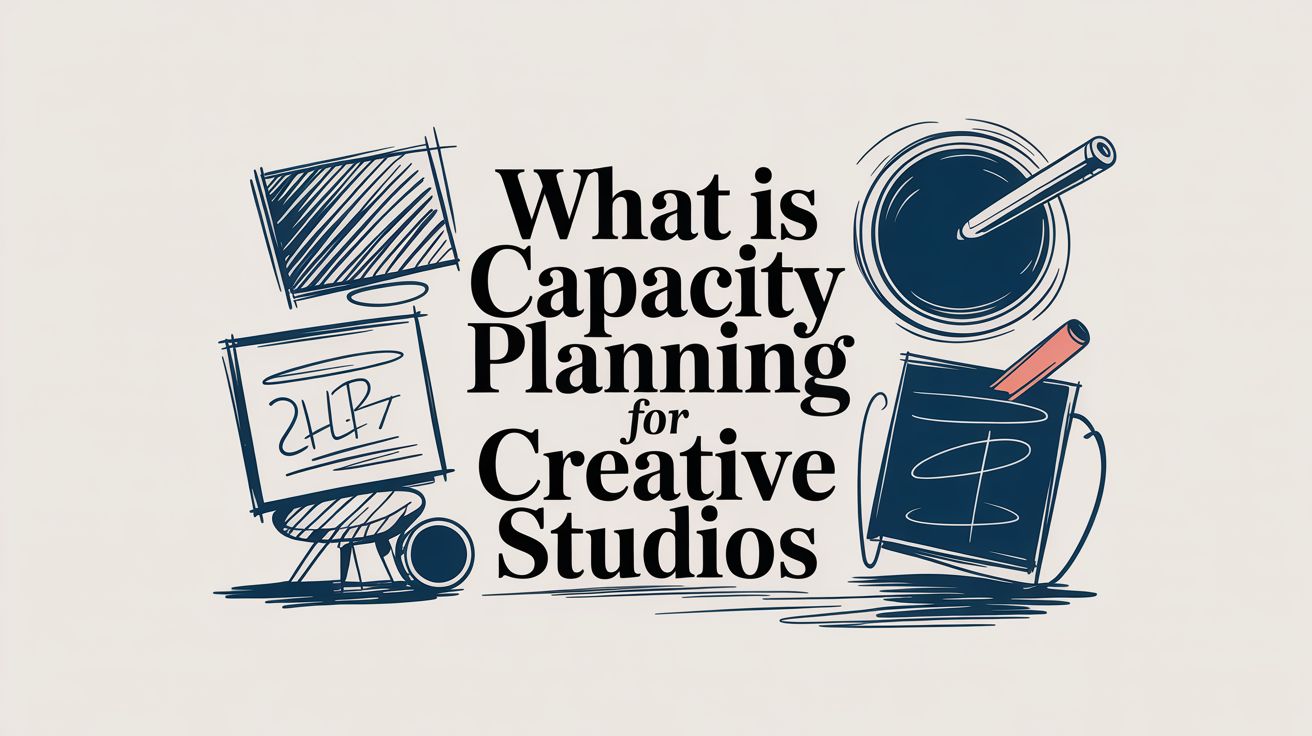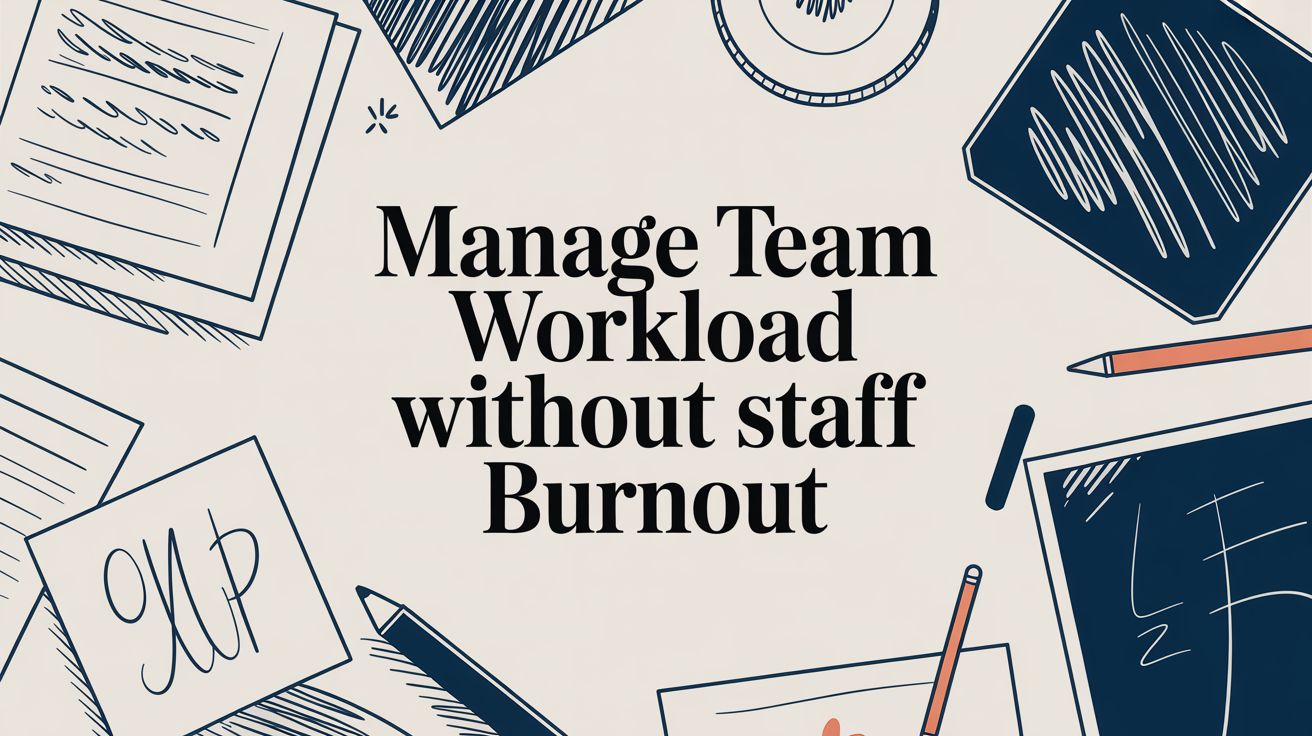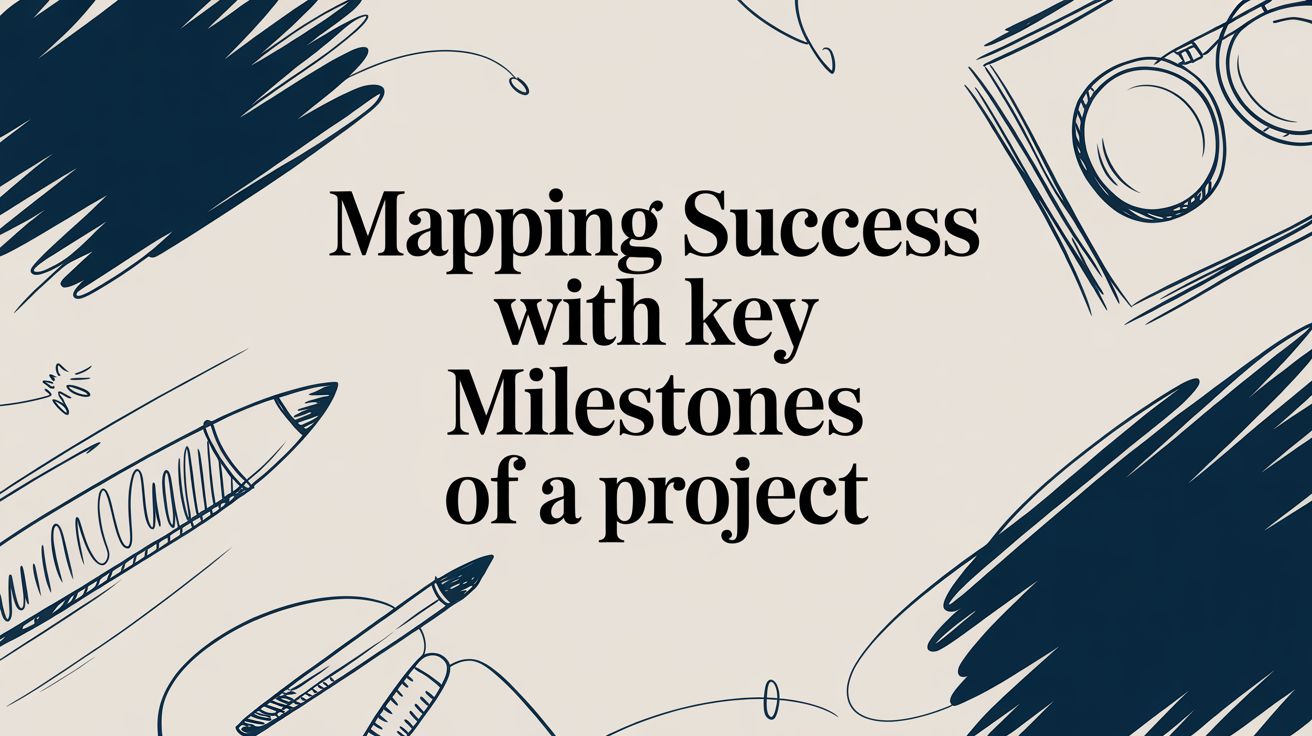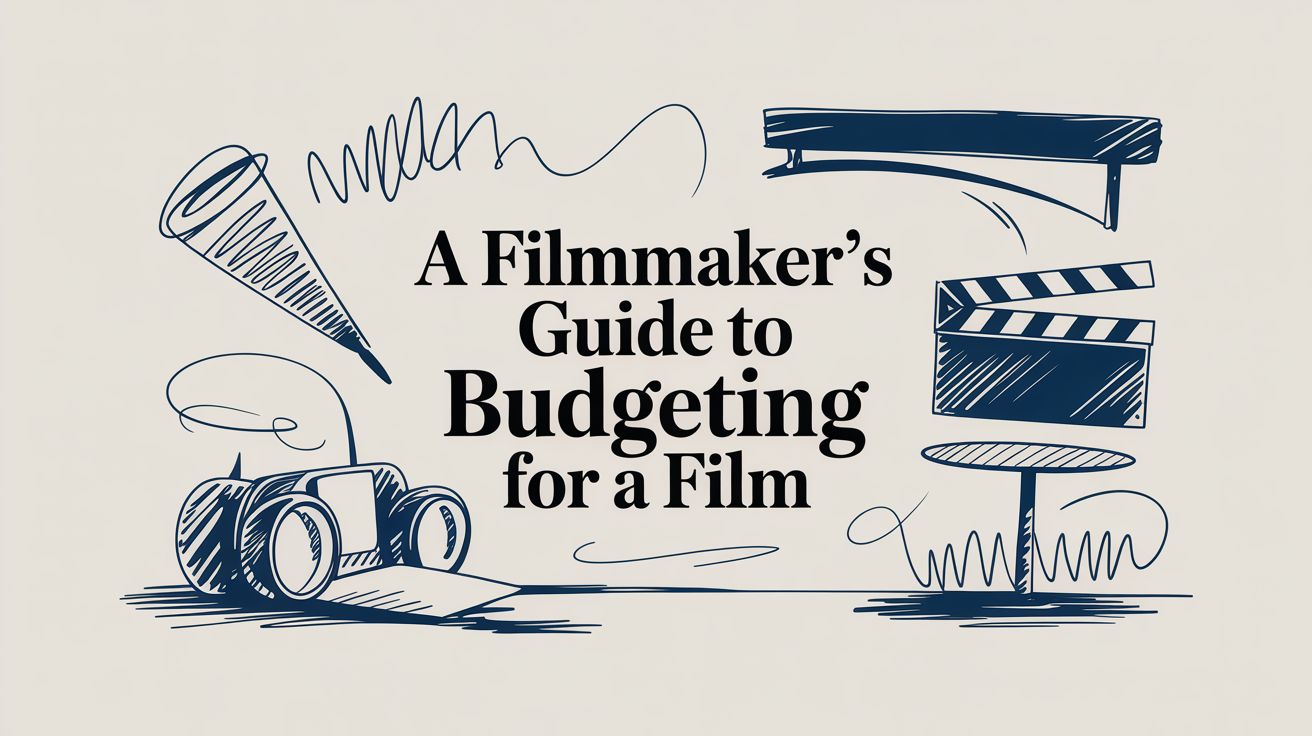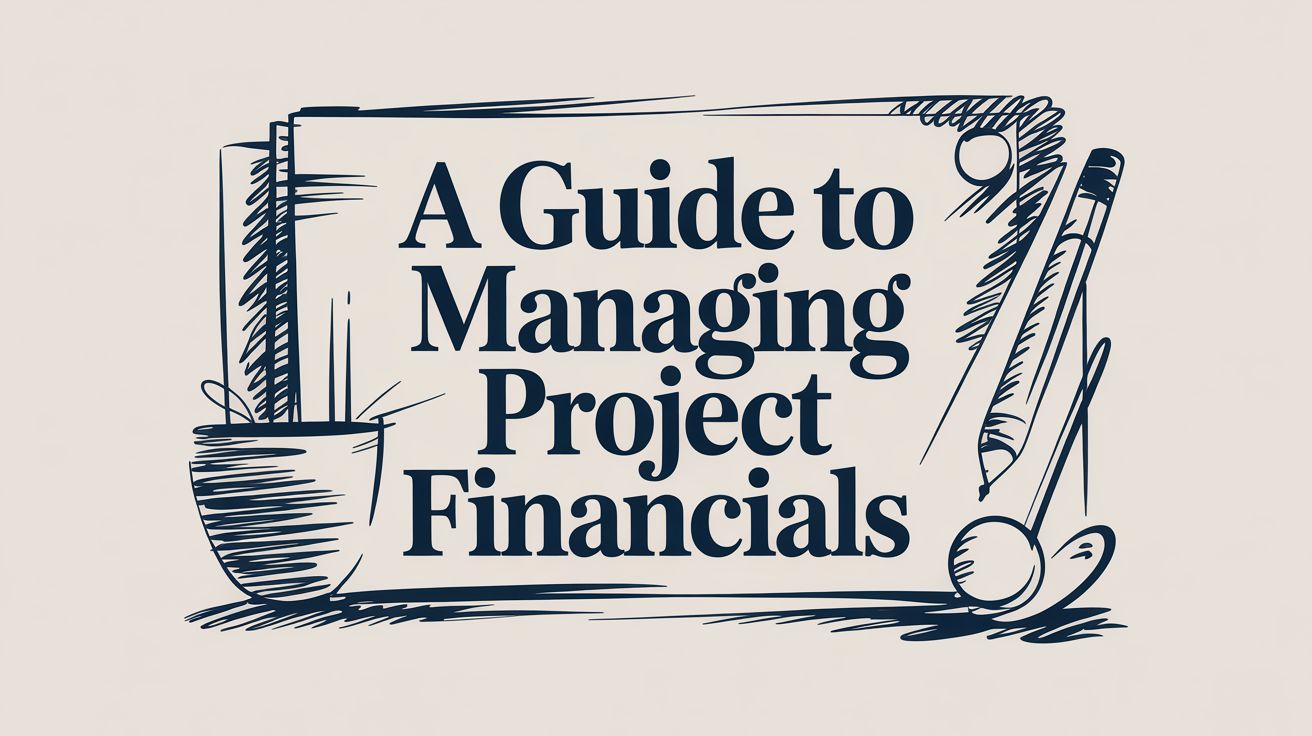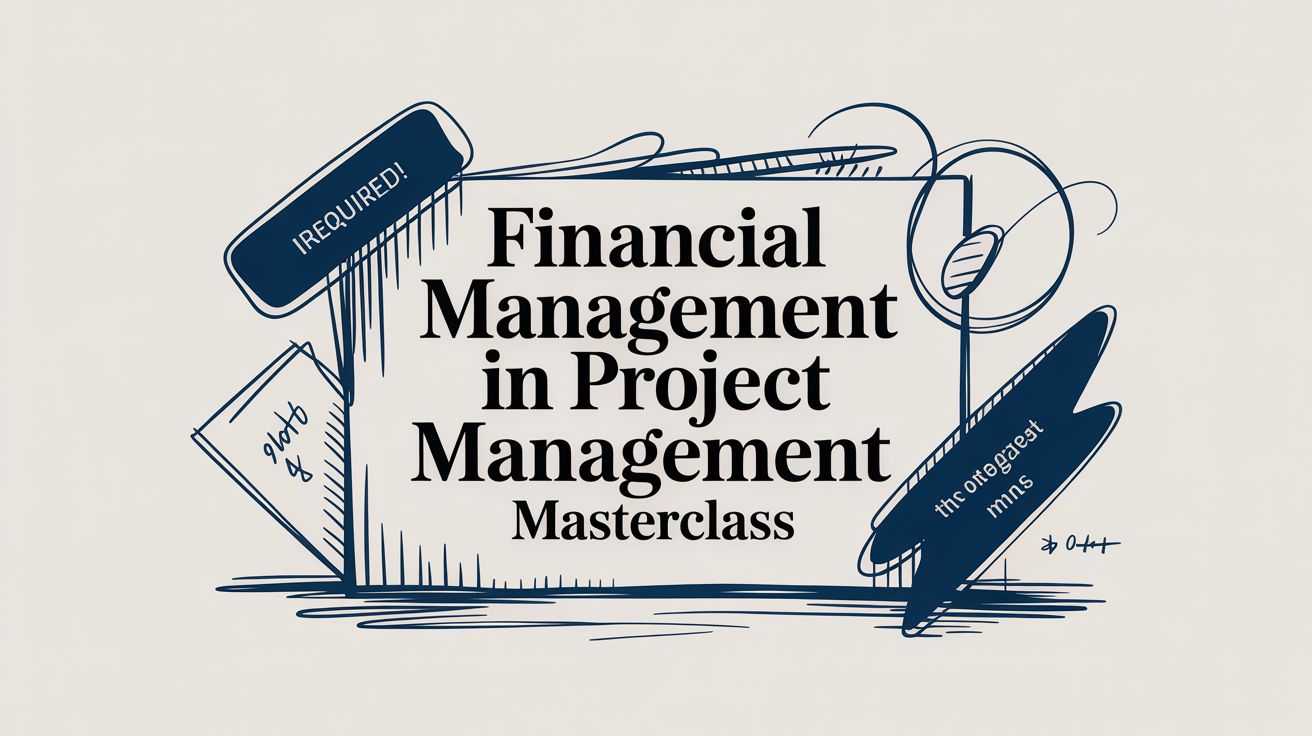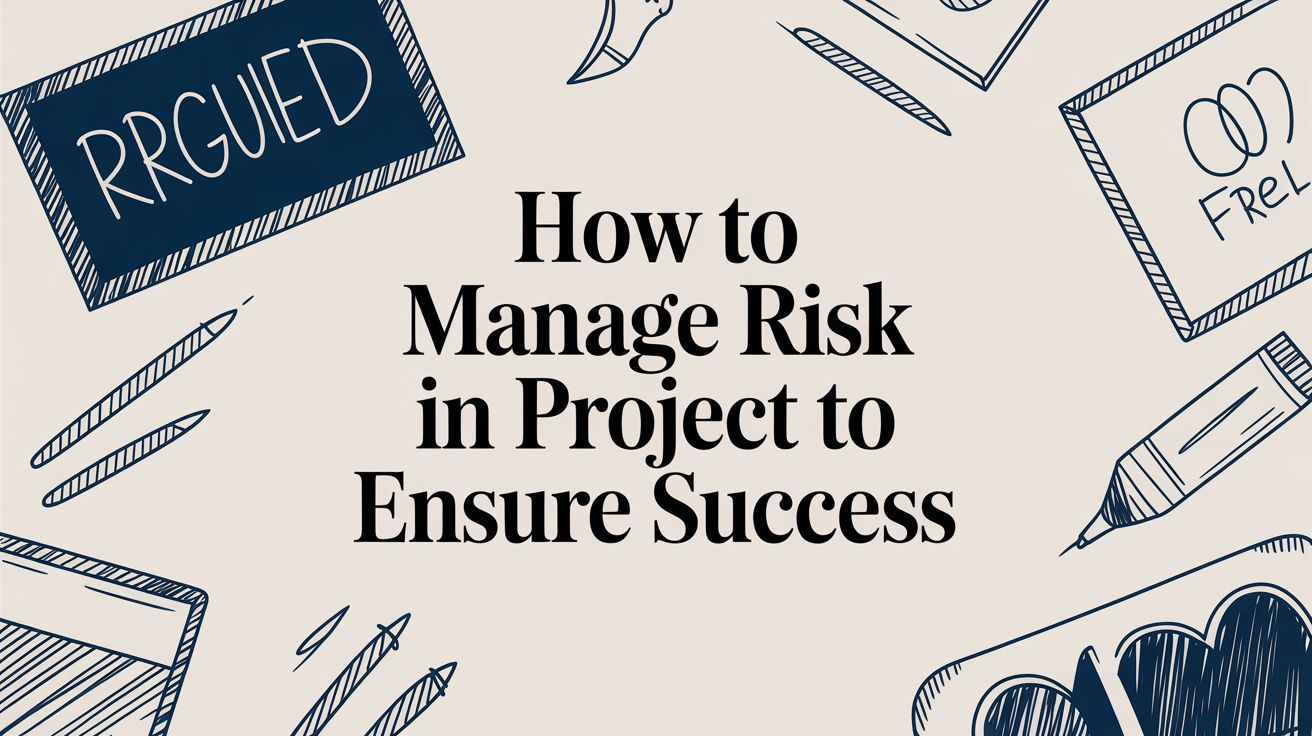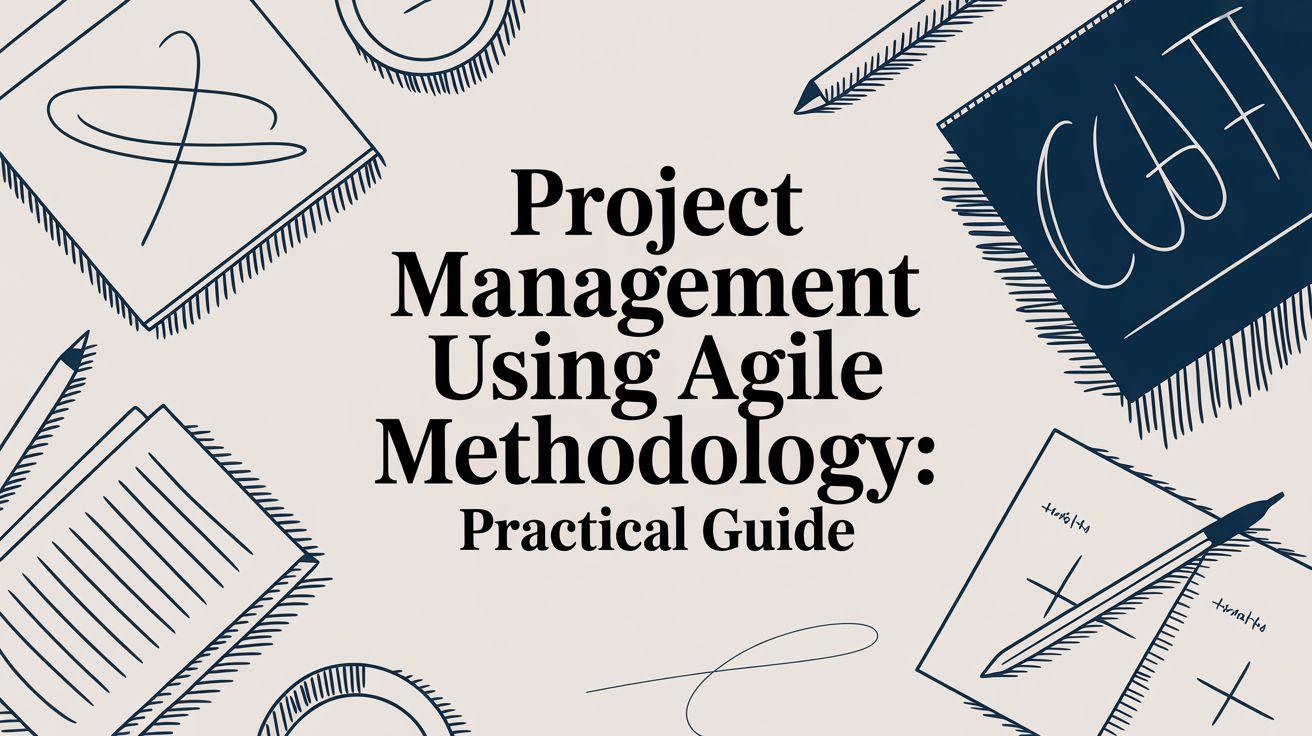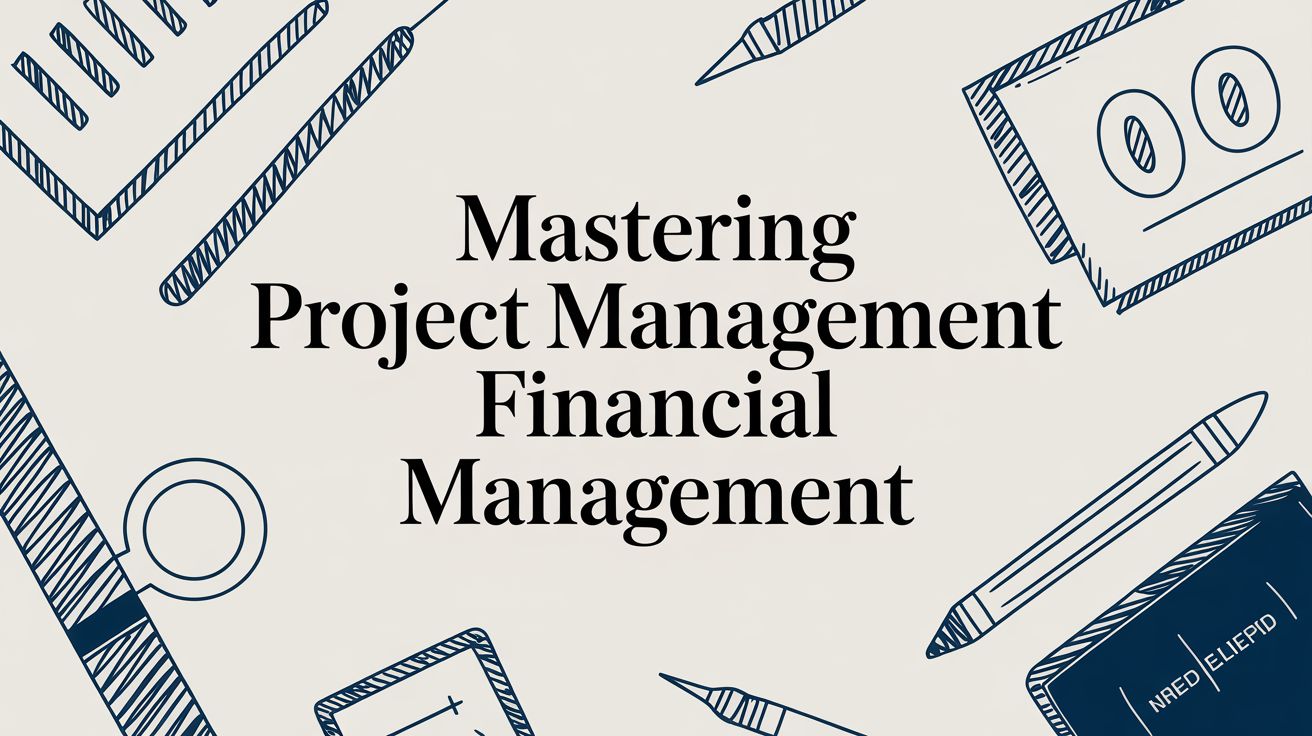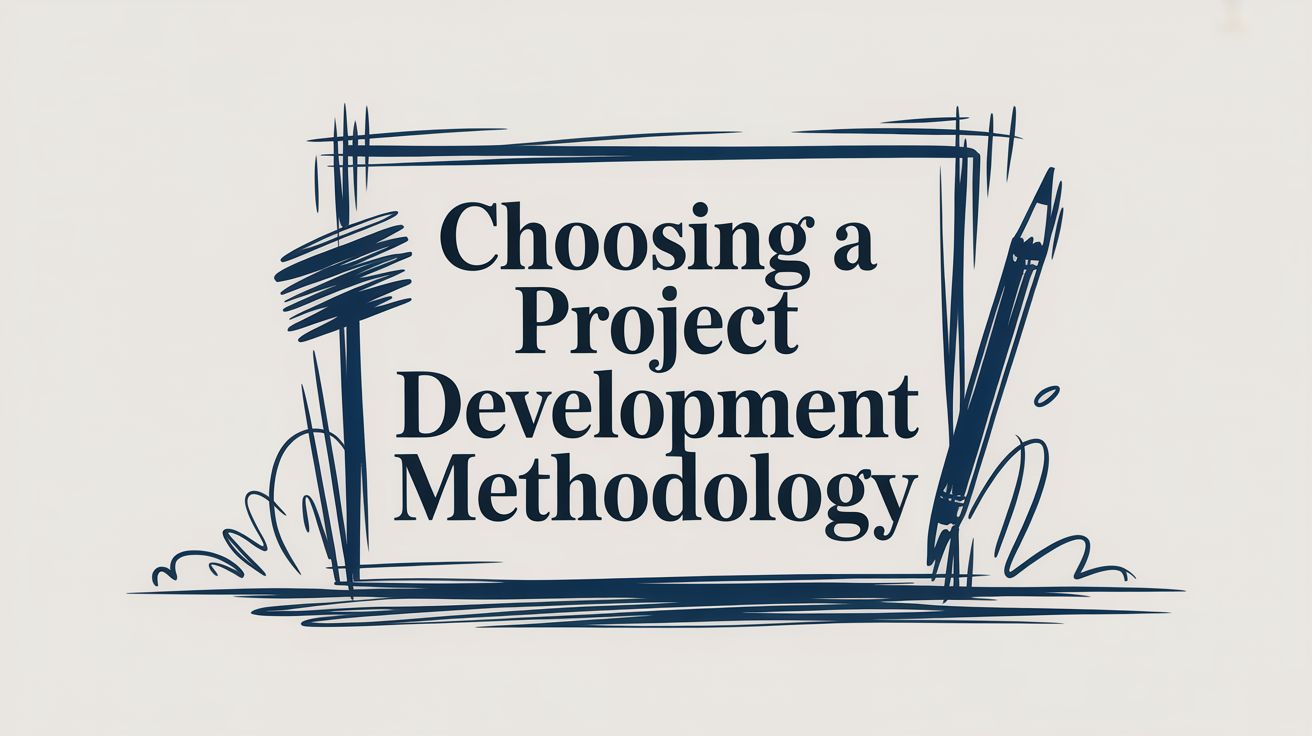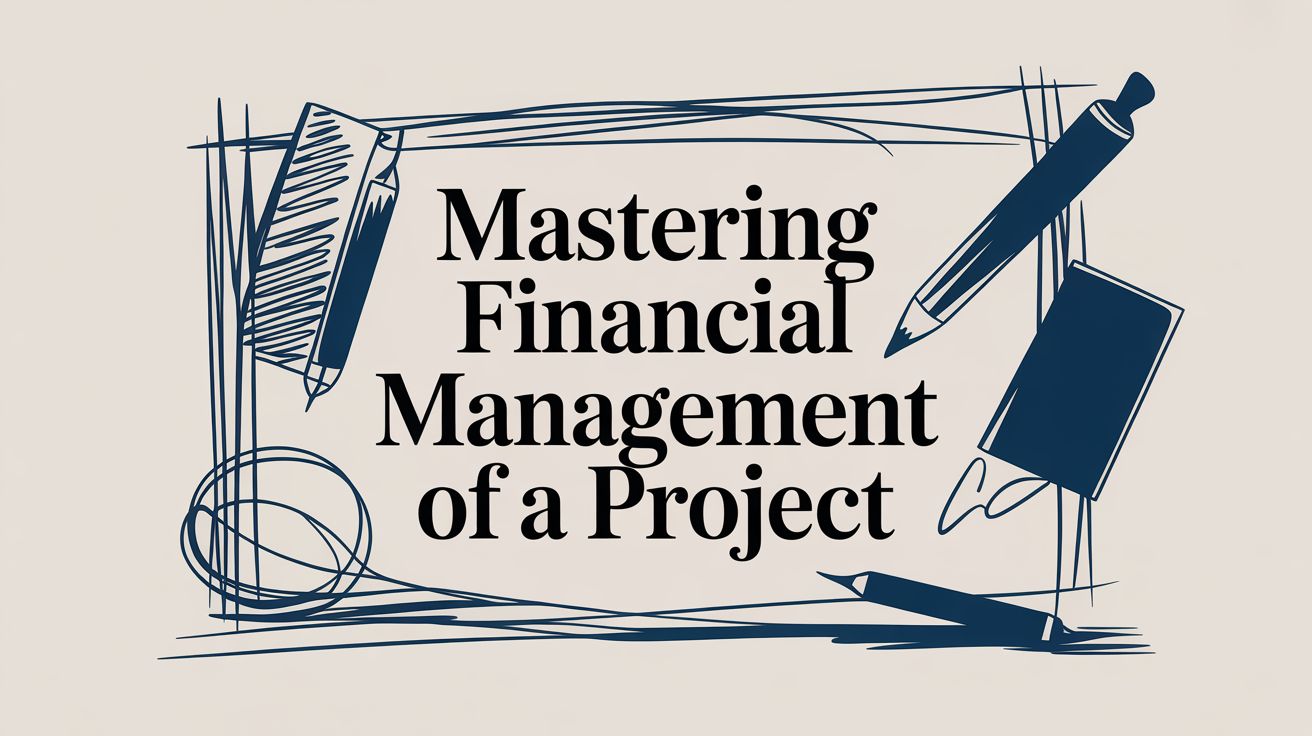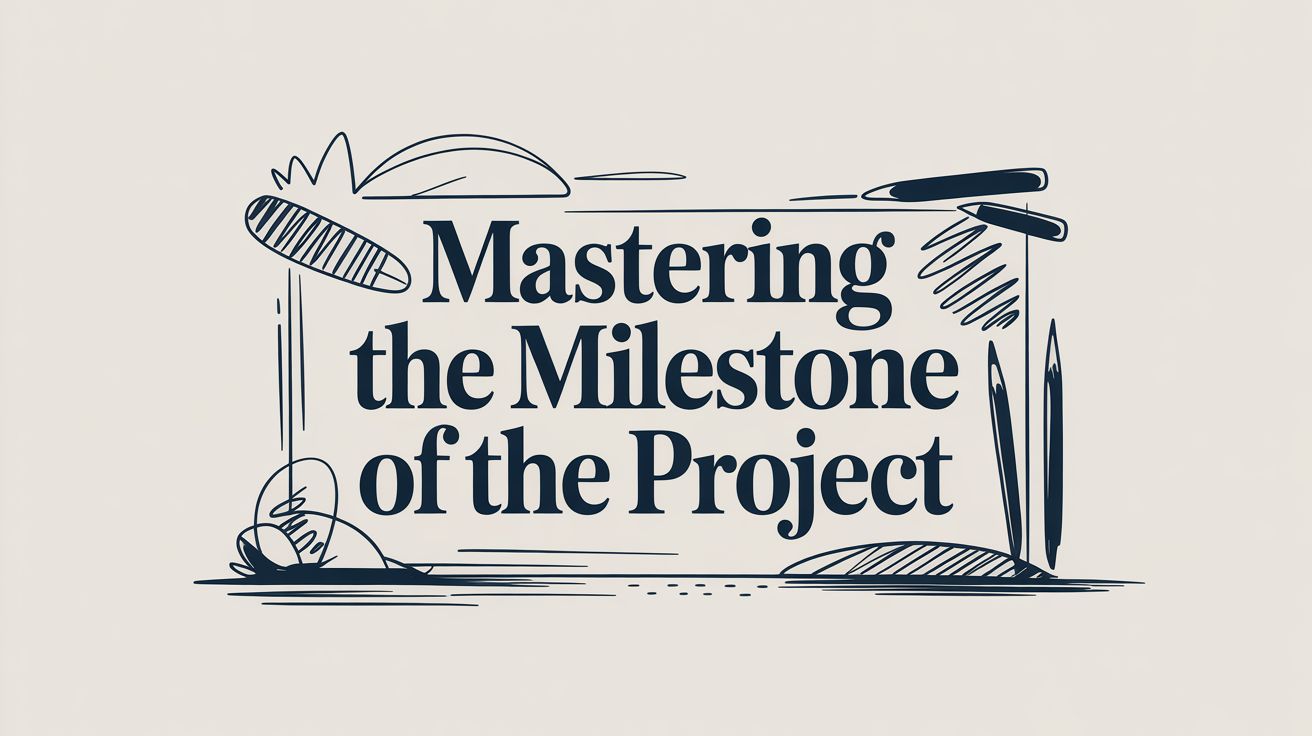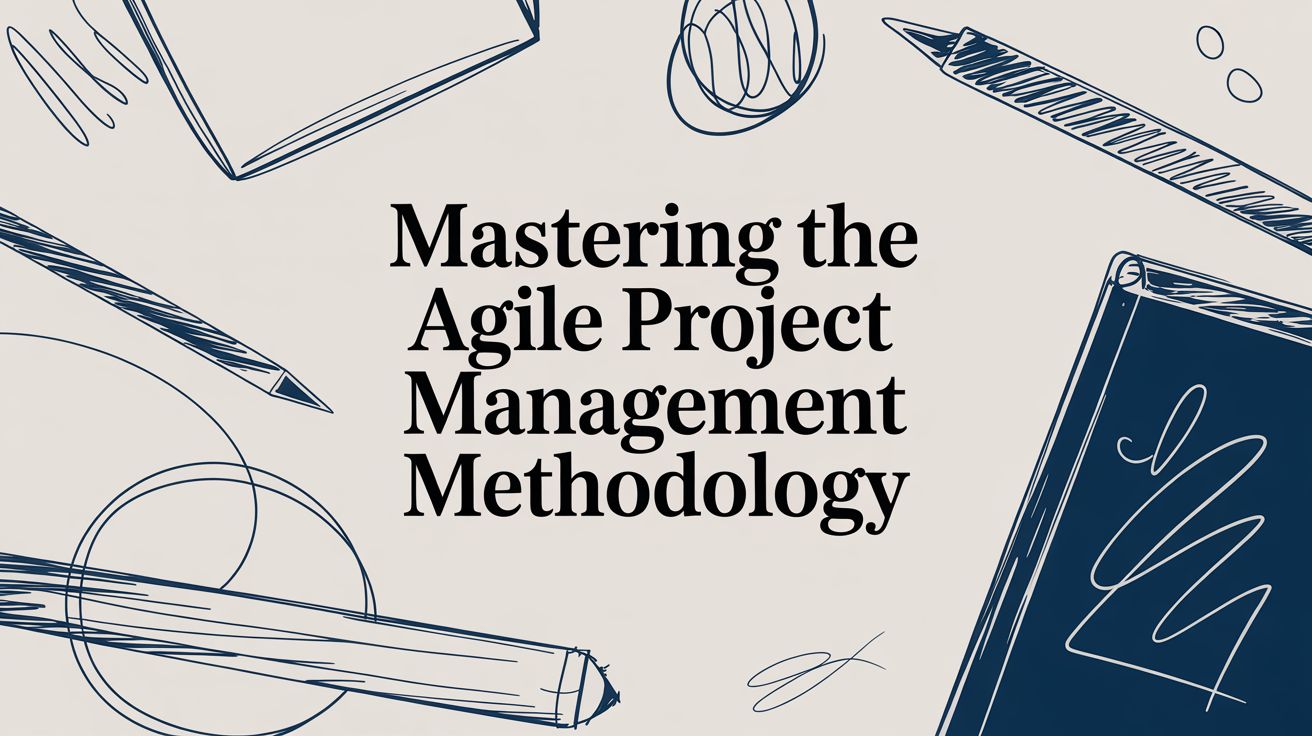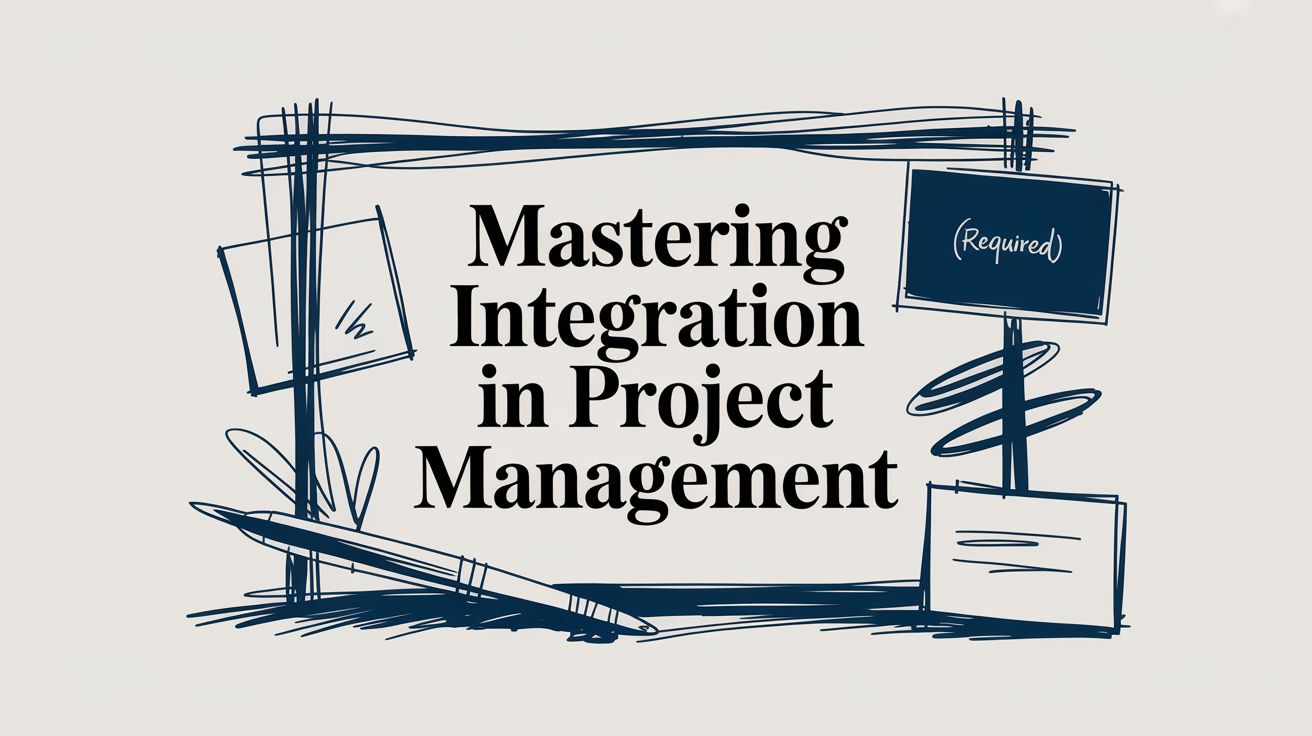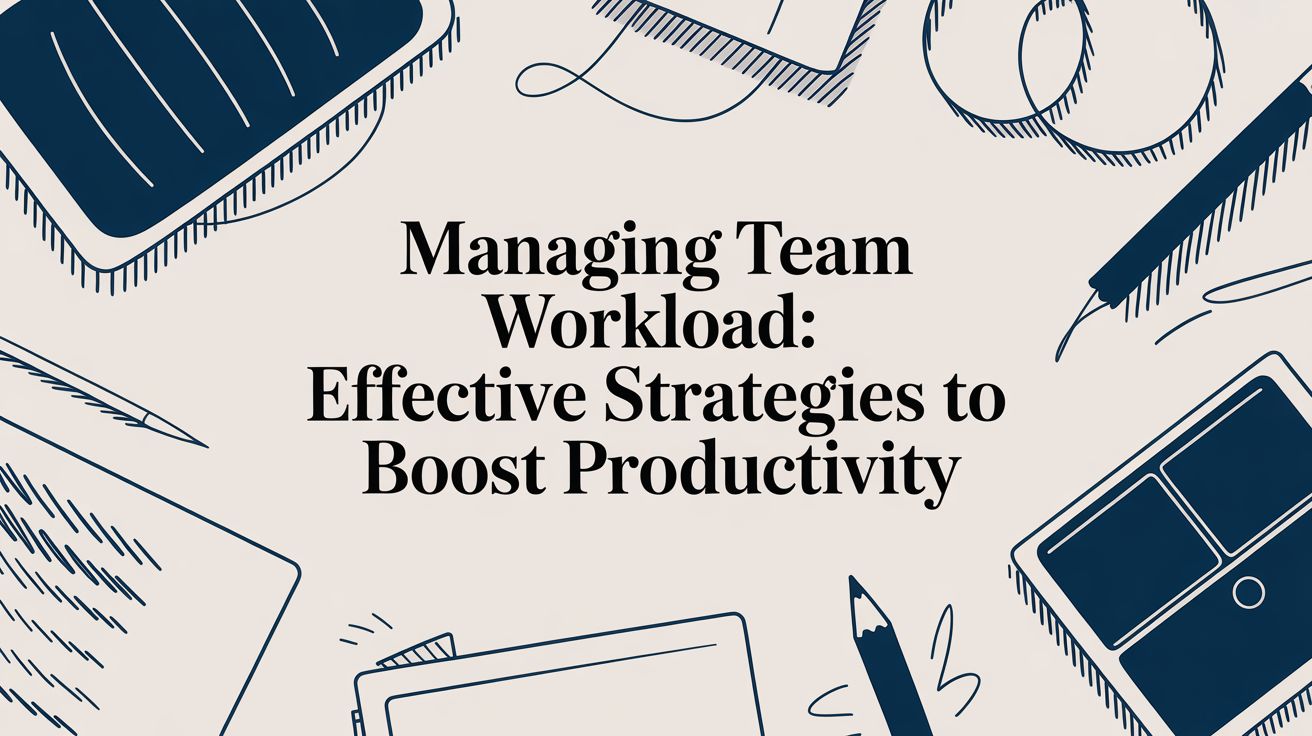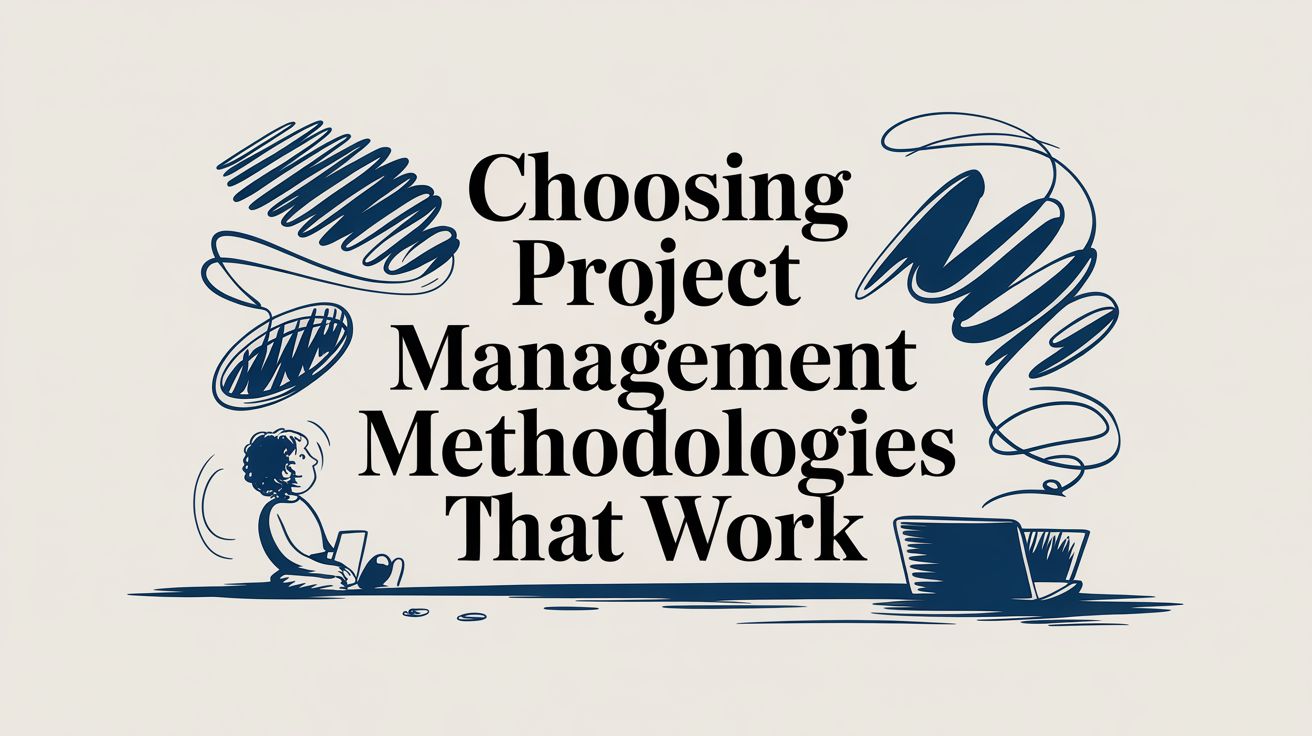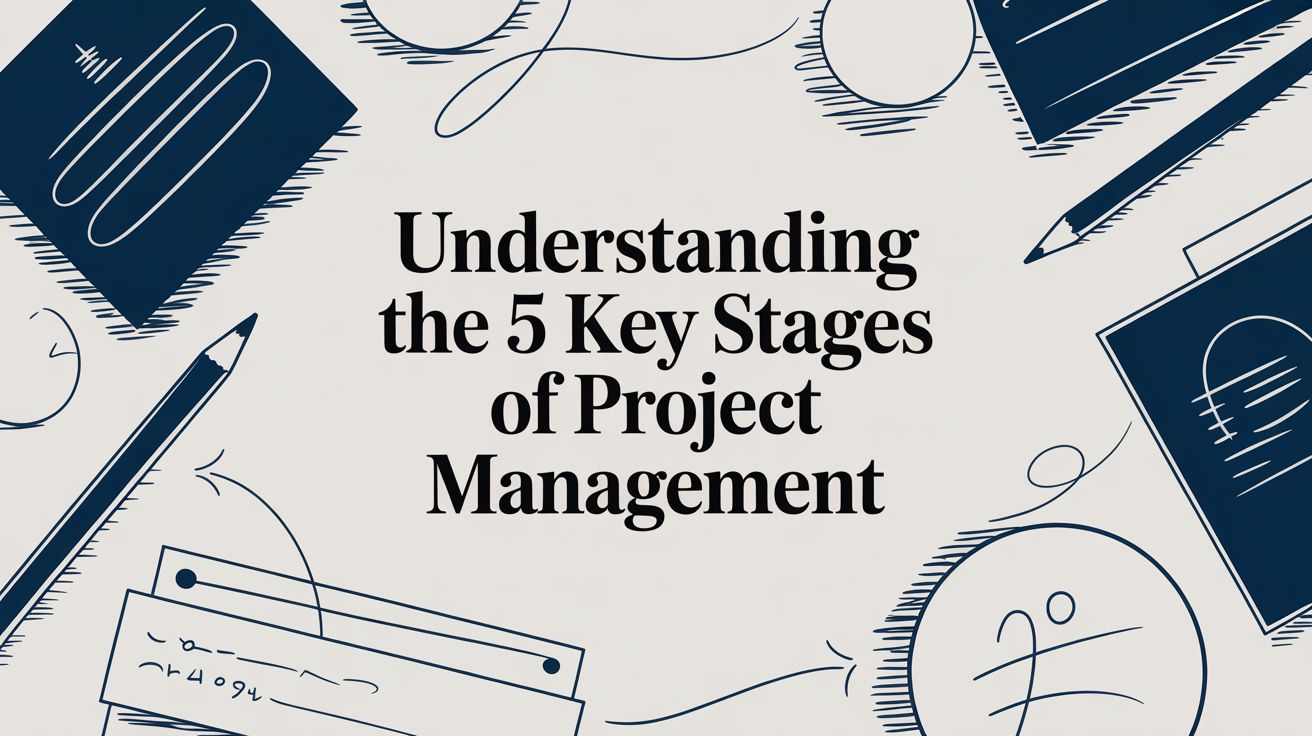At its heart, resource management is the art of making every asset count. It’s about planning, scheduling, and allocating the people, budgets, tools and time within your organisation so you hit each milestone without burning out your team or your bank account.
Rather than reacting to fires as they flare, effective resource management gives you a crystal-clear view of what’s on hand and what’s needed. You’ll move from guesswork to informed decisions—and that’s when projects start running like clockwork.
What Is Resource Management Really
Picture a head chef in a busy restaurant. They don’t merely shuffle ingredients; they know exactly what’s in the pantry, who’s best at searing fish and when to prep the garnish. This attention to detail stops chaos in its tracks and cuts waste to almost nothing.
In business, the principle is identical. By mapping out your resources before a single task begins, you avoid the usual pitfalls—overloaded staff, surprise bill spikes and deadlines that slip away. A deeper dive into how this aligns with overarching strategy lives in our guide to business and strategic planning.
Before launch day, you’ll want clear answers to:
- Who Is Available? Auditing your team’s capacity and specialisms.
- What Tools Do We Need? Making sure every licence, workstation or camera is ready.
- How Much Will It Cost? Matching scope to the budget you’ve got.
- When Can We Deliver? Building timelines grounded in real availability.
The Four Core Types Of Business Resources
Below is a quick overview of the main resource categories every organisation must juggle.
| Resource Type | Description | Example in a Business Context |
|---|---|---|
| Human | The skills, knowledge and labour of your team | Post-production editors and sound mixers |
| Financial | The budgets, cash flow and funding sources | Allocated budget for a documentary project |
| Physical | Tangible assets like equipment and infrastructure | Editing suites, cameras and studio space |
| Intangible | Non-physical assets such as IP and goodwill | Software licences and brand reputation |
Each of these pillars demands its own strategy, but when they align, your whole operation gains momentum.
The Core Components Of Resource Management
At its simplest, resource management prevents your most precious assets from stretching too thin. It’s not just about ticking boxes or assigning tasks; it’s a living system that reacts to changes and flags bottlenecks long before they derail your project.
Resource management is the crucial link between your strategic goals and the day-to-day execution needed to achieve them. It transforms abstract plans into tangible, achievable outcomes by ensuring the right resources are in the right place at the right time.
By treating people, funds and tools as a unified ecosystem, you build workflows that hum along steadily and deliver predictable results. If you want to see how this directly feeds into creating realistic schedules, check out our guide on project planning.
The Four Pillars of Successful Resource Management
To really get to grips with resource management, you need to understand its core functions. It isn't a single action but a continuous cycle built on four essential pillars. Mastering these turns reactive problem-solving into proactive, strategic leadership, making sure your projects land on time and on budget.
Each pillar builds on the last, creating a solid framework that supports your entire operation from start to finish.
Pillar 1: Planning
The first pillar, planning, is all about strategic foresight. It involves forecasting the resources you’ll need for an upcoming project long before anyone is assigned a single task. This isn't just guesswork; it's about digging into the project scope, looking at historical data, and flagging potential risks to map out a detailed blueprint of what's required.
For a post-production studio, this means figuring out how many editors, colourists, and sound engineers are needed for a new feature film. It also means anticipating the demand for specific editing suites or software licences. A solid plan prevents that last-minute scramble that always leads to expensive hires and project delays.
Pillar 2: Allocation
Once your plan is in place, the next step is allocation. This is the art of assigning the right resource to the right task at the right time. It’s a critical decision-making process that balances skills, availability, and budget against the project’s needs to make sure everything runs as efficiently as possible.
The heart of allocation is maximising value. It's about ensuring your most skilled VFX artist is working on the most complex shots, not routine tasks. That's how you get the highest possible return on their expertise.
Proper allocation stops people from burning out by spreading the workload evenly. It also prevents bottlenecks by making sure no single resource is overstretched. It’s the difference between a team that’s stretched thin and one that’s deployed strategically.
Pillar 3: Scheduling
With resources allocated, scheduling is what brings the plan to life. This pillar involves creating a detailed, realistic timeline that maps out when each task will be done and by whom. It essentially visualises the entire project workflow, highlighting dependencies between tasks—for example, you can't start colour grading until the final edit is locked.
Effective scheduling gives the entire team clarity, setting clear expectations and deadlines. For project managers, it offers a bird's-eye view, making it much easier to track progress and keep stakeholders in the loop.
This concept map helps visualise the core types of resources—people, budget, and tools—that these pillars help you manage.
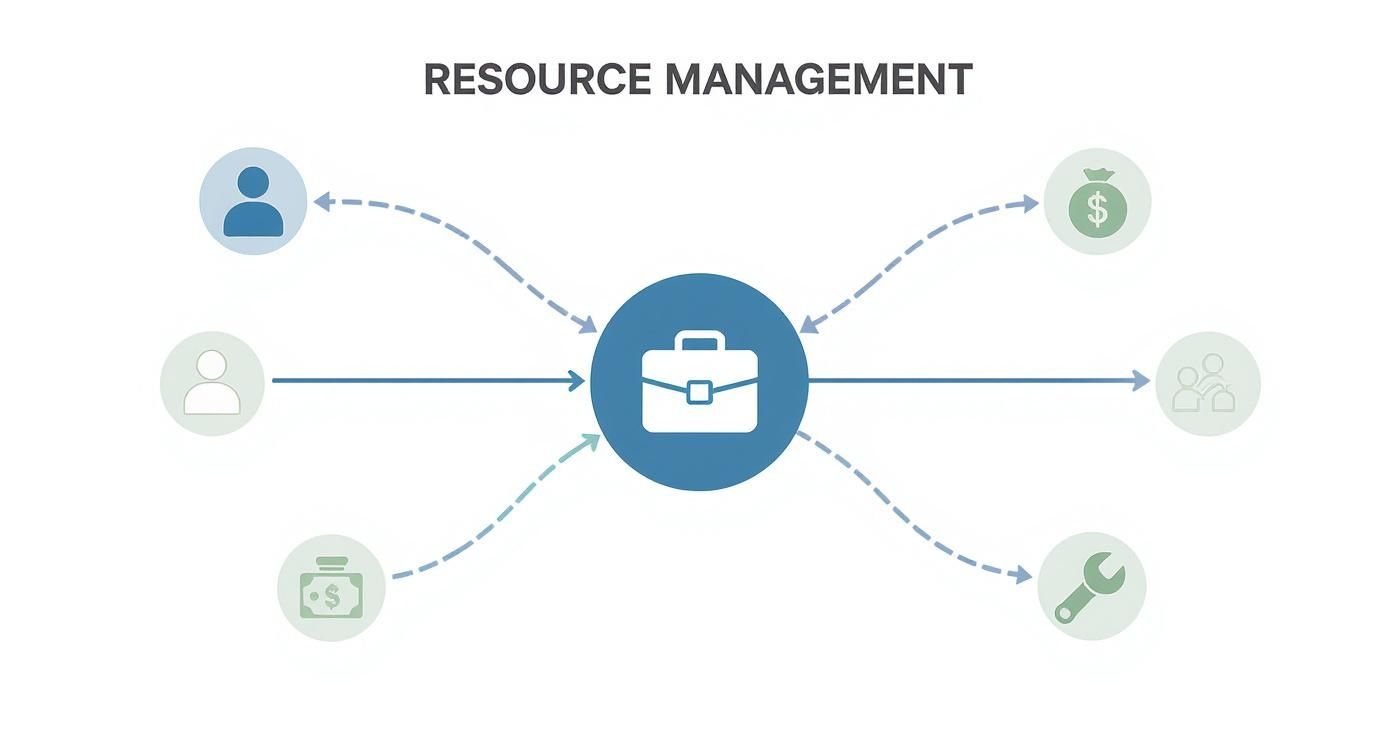
As you can see, every pillar has to consider the interplay between your team's skills, the funds you have available, and the equipment you need.
Pillar 4: Tracking
Finally, tracking is the pillar that keeps your project on course. It’s all about continuously monitoring how your resources are being used, how the project is progressing, and where the budget is going compared to your initial plan. This real-time oversight allows you to spot any deviations early and make smart adjustments.
For instance, if tracking reveals that the sound design phase is eating up more hours than planned, you can jump on it immediately. Maybe you reallocate a junior sound editor to help out, adjust the schedule, or let the client know about the potential budget impact. Without tracking, small hiccups can quickly snowball into major problems that put the whole project at risk.
Managing People Your Most Valuable Resource

Software, budgets and equipment matter, sure. But they're just the kit. Your team? That's the powerhouse driving every project's success and nurturing long-term organisational health.
Human resource management goes beyond ticking boxes or flipping tasks on a Gantt chart. It’s a practice in deliberately cultivating your most valuable asset: the people.
From Simple Scheduling to Strategic People Management
Moving from line-item scheduling to strategic people management takes more than shuffling assignments. It involves aligning each task with individual strengths and aspirations.
- Skill Mapping: Spotting expertise and matching projects to where team members excel.
- Capacity Planning: Monitoring workloads so no one runs on empty and work quality stays high.
- Growth-Oriented Tasking: Offering assignments that hit project targets and expand skillsets.
When people feel their personal growth counts as much as deliverables, they bring energy and creativity to every assignment.
The Real-World Impact of People-Centric Management
Putting your team's wellbeing front and centre produces benefits far beyond meeting deadlines. It fuels morale, loyalty and a genuinely collaborative culture.
Supportive environments encourage team members to speak up, innovate and commit to shared goals.
In the UK, the employment rate for those aged 16 to 64 sits at 75.2%. At the same time, a dip in payrolled employees signals growing economic pressures.
Tackling burnout isn’t a luxury here—it’s essential for sustainable productivity. To truly optimise your team's potential, organisations must implement comprehensive talent management approaches.
Looking after people isn't just a nice-to-have; it’s a clear-cut business advantage. For a detailed guide on balancing these demands, explore our article on managing team workload.
Connecting Resource Planning to Financial Health

Let’s be honest: every decision you make about your resources has a price tag. Assigning an editor, booking a grading suite, renting specific kit—it all hits the bottom line. This is why good resource management isn't just about operations; it's a cornerstone of your company's financial stability. It’s what turns abstract project goals into a concrete, costed-out plan.
This is where the real power of the concept lies. It’s about making sure every pound you spend on people, equipment, or software delivers a clear return. It stops the kind of budget blowouts that can sink even the most promising creative projects before they’re finished.
When you plan with precision, you arm yourself with the data to build accurate budgets from the ground up. By knowing your team's real capacity and the true cost of your assets, you can forecast expenses confidently and sidestep the costly surprises that always come from guesswork.
From Resource Plan to Profit Margin
Think of a solid resource plan as a financial roadmap for your projects. It lets you track what you’re actually spending against your forecasts in real time, giving you the control needed to maintain strict financial discipline. And in this business, that proactive approach is what protects your profit margins.
When you can see exactly where the money is going, you can make smarter calls on the fly. For instance, if one stage of the post-production workflow is eating up more resources than planned, you can step in early to reallocate assets or tweak the schedule before costs spiral. That kind of oversight is vital, whether you're working on a small indie project or a massive series.
Effective resource management ensures that operational efficiency translates directly into financial health. It’s the bridge between doing great work and building a sustainable business.
Consider a huge public sector project like Building Digital UK (BDUK), which is focused on expanding gigabit broadband across the country. In a single financial year, BDUK operated within its programme resource budget of £47.8 million, while its total capital spend was £310.5 million—a variance they managed through tight resource control. It’s a massive example, but the principle is the same.
Key Financial Benefits of Strategic Allocation
When you line up your resource strategy with your financial goals, you get real, tangible benefits that strengthen your business. This is about more than just trimming costs; it's about getting the most value out of every penny.
The main advantages are clear:
- Preventing Costly Overruns: By accurately forecasting what you’ll need, you avoid having to make last-minute hires or rent equipment at inflated, premium prices.
- Maximising Utilisation: You ensure your most valuable resources—both your talented team and your expensive gear—are being used effectively, generating revenue instead of gathering dust.
- Improving Financial Forecasting: Reliable data from your resource planning leads to much more accurate long-term financial projections, which means you can make smarter business decisions.
Ultimately, mastering this connection lets you price your projects with confidence, manage your cash flow, and build a more resilient financial future. To get a better handle on these principles, take a look at our complete guide on budgeting and controlling.
How Resource Management Can Boost the UK’s Productivity
The principles that make a post-production house run smoothly don't just stay within those four walls. They scale. In fact, they scale up to influence the economic health of an entire nation. In the UK, getting resource allocation right is a massive driver of national productivity, shaping everything from massive infrastructure projects to regional growth and our standing on the global stage.
Think about it. The same fundamental logic you use to assign an editor to a crucial project is the same logic used by policymakers to direct investment and talent where they can make the biggest splash. It's a high-level game of analysing huge datasets to figure out where resources—skilled people, funding, new tech—are needed most. By spotting regional strengths and weaknesses, they can roll out targeted strategies, like funding training programmes in areas crying out for specific skills or investing in transport links to better connect economic hubs.
Closing the Regional Productivity Gap
Let's be honest, not all parts of the country grow at the same speed. These differences often boil down to how resources are managed. For instance, data from the Office for National Statistics (ONS) shows that while the North West and Northern Ireland have seen decent productivity growth since 2019, other places like Scotland and Wales have lagged behind. This just goes to show how vital it is to have tailored, regional strategies that actually address local challenges and seize local opportunities. You can dig into the numbers in this UK regional productivity analysis.
By channelling resources intelligently, the government can start to close these gaps. This isn't just theory; it looks like real-world action:
- Investing in digital infrastructure in rural areas to give new businesses a fighting chance.
- Funding specialised training to build a workforce that's ready for the industries of tomorrow, not yesterday.
- Offering incentives for companies to set up shop in less-developed regions, bringing jobs and investment with them.
At a national level, what is resource management if not the art of ensuring every region has the tools it needs to thrive? It's about creating a balanced and resilient economy where growth is shared, not concentrated in one or two hotspots.
When you take this wider view, a powerful truth clicks into place: the basic skills of resource management are the bedrock of economic strength. By planning, allocating, and tracking resources on a massive scale, the UK can lift its overall productivity, spark innovation, and build a more prosperous future for everyone. It’s the same discipline we practice every day in our studios, just with much, much higher stakes.
Your First Steps to Better Resource Management
It’s one thing to talk about theory, but putting it into practice? That can feel like a huge leap. But here’s the thing: getting a grip on your resource management doesn’t mean you have to tear everything down and start from scratch overnight.
It’s all about taking deliberate, logical steps. These small wins build momentum, and you’ll start seeing the benefits—and bringing clarity to your team and projects—almost immediately.
Think of this as your practical playbook. It’s designed to walk you through the foundational moves that create a more organised, efficient, and predictable workflow, no matter how big or small your studio is.
Conduct a Thorough Resource Audit
Before you can manage your resources, you need to know what you’ve actually got. A resource audit is just a fancy way of saying you’re taking a full inventory of everything at your disposal—your team's skills, software licences, equipment, and even which meeting rooms are free.
It’s like creating a detailed map of your entire operation. This first step is so important because it gets rid of guesswork and replaces it with cold, hard data. You might find out your top editor is constantly swamped, or that a specific editing suite is sitting empty 30% of the time. Insights like these are gold; they’re the foundation for making smarter decisions.
An accurate resource audit is the single most powerful starting point for strategic resource management. It gives you the visibility to stop firefighting and start proactively planning, heading off bottlenecks before they ever happen.
Choose the Right Tools for the Job
Once you have a clear picture of your resources, it’s time to arm your team with the right tools. Trying to juggle everything with a patchwork of disconnected spreadsheets and endless email chains is a recipe for confusion. It makes tracking things in real-time next to impossible.
Modern resource management software brings everything into one place, creating a single source of truth that everyone can rely on.
When you’re looking for a platform, make sure it offers:
- Real-time visibility into who is working on what.
- Capacity planning features to stop your team from burning out.
- Simple request and approval workflows that don't get in the way.
Establish and Communicate Clear Processes
A great tool is only half the battle. It needs to be backed up by clear, consistent processes that everyone on the team actually understands and uses.
Take some time to define how your team should request resources, how approvals work, and what happens when project priorities inevitably shift. Document these workflows and make sure they’re easy for everyone to find and follow.
This kind of standardisation gets rid of ambiguity and makes sure resources are handed out fairly. It creates a system that’s transparent and predictable, which means less internal friction and more time for your team to focus on what they do best: creative work.
Frequently Asked Questions
Even with a solid plan in place, some practical questions always pop up when you start putting a resource management strategy into action. Let’s tackle a few of the most common ones.
What Is the Difference Between Resource Management and Project Management?
It’s easy to get these two mixed up, but think of them as two sides of the same coin. They work together, but they focus on different things.
Project management is all about the what and the when. It deals with defining tasks, mapping out timelines, and making sure the project hits its targets. It’s the roadmap for the work itself.
On the other hand, resource management zeroes in on the who and the how. It’s the strategic game of planning and scheduling the people, the gear, and the budget you need to actually do the work. A project manager might say, "We need to get the edit locked by Friday," while a resource manager makes sure the right editor and editing suite are actually free to make that happen.
Project management is about guiding the project from A to B. Resource management is about making sure the car has fuel, the right driver is behind the wheel, and the engine is in good shape for the journey.
How Do I Start with a Very Small Team?
The good news is, the principles are exactly the same for small teams—just simpler to implement. The absolute first step is getting visibility.
Create a shared calendar or even a basic spreadsheet that shows who is working on what, and for how long. This simple overview is brilliant for preventing accidental overloads and makes it crystal clear who has the bandwidth for new tasks. Even a very basic system can be a lifesaver, helping you avoid burnout and making everything run a bit smoother.
What Are the Most Common Mistakes to Avoid?
The single biggest mistake we see is treating people and resources as if they're interchangeable cogs in a machine. Throwing a complex VFX task at a junior artist just because they’re ‘free’ is a recipe for disaster. You’ll get delays, shoddy work, and a stressed-out artist. Always, always match the right skills to the right task.
Another classic pitfall is not tracking the actual time spent against what you planned. If you don't collect this data, you have no way of making better forecasts next time. You’ll just be stuck in an endless cycle of pure guesswork.
Ready to stop juggling spreadsheets and start making smarter decisions? freispace provides the visibility and control you need to manage your post-production resources effectively. Optimise your workflows and deliver projects on time, every time, by visiting https://freispace.com.

